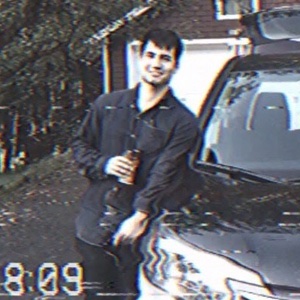77+ Scary Movies Based on True Stories
Horror movies are already scary enough, but these scary movies based on true stories up the creepiness volume very, very high.
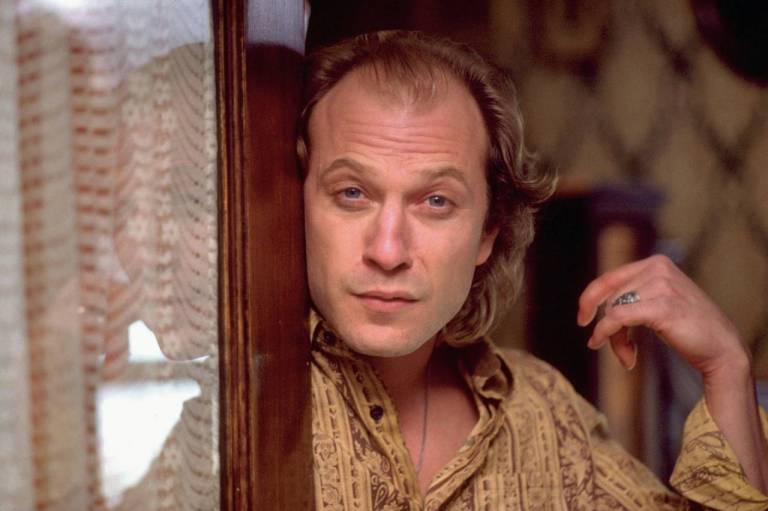
Horror movies are already scary enough, but watching a scary movie based on a true story turns the creepiness volume up very, very loudly.
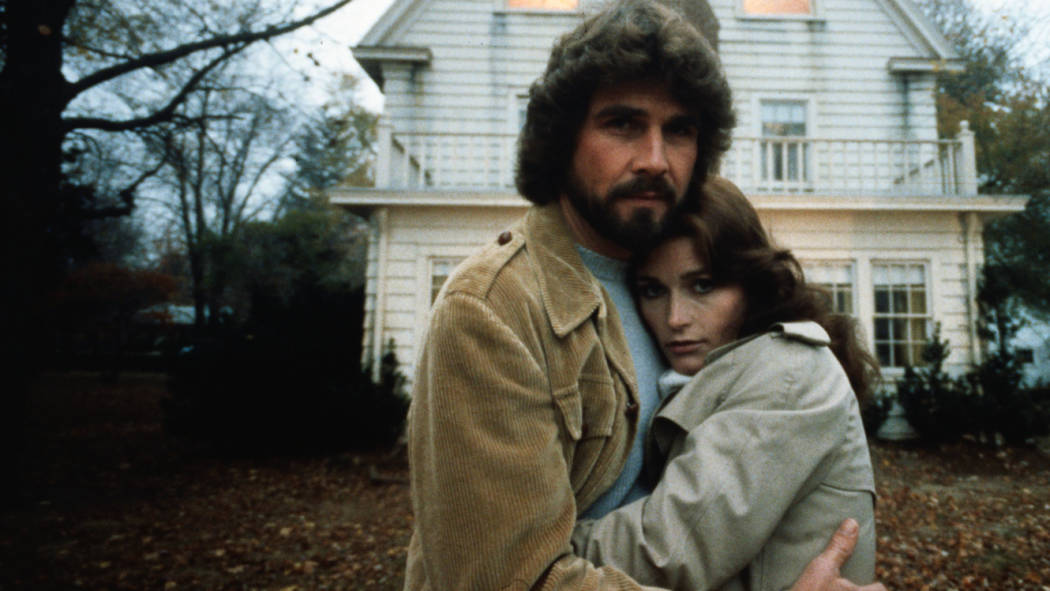
For the purposes of this article, it’s necessary to explain the difference between a movie based on a true story and one inspired by a true story. If it’s based on a true story, you can expect it to faithfully follow the details of what happened. But as you might notice, several of the movies below were inspired by real life elements. There are also creators who intentionally obscure which parts of their films are fictional.
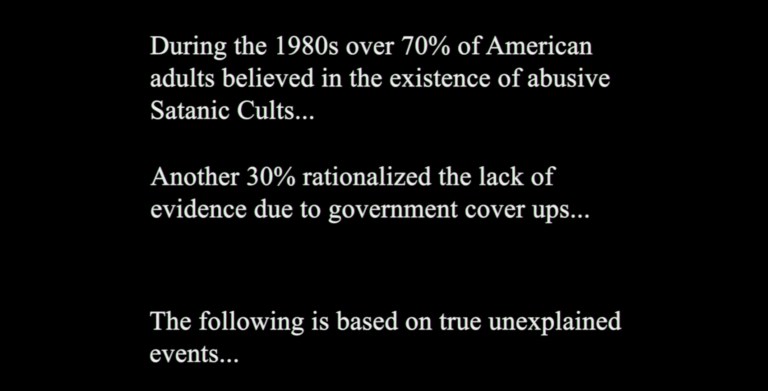
Horror director Tobe Hooper started the “based on a true story” trope by marketing his movie The Texas Chainsaw Massacre (1974) as based on a real crime when the plot didn’t resemble any real crime at all and merely took some inspiration from the murderer and necrophile Ed Gein. More than a successful marketing ploy, Hooper said he was inspired to market his film based on a lie because he felt lied to by the U.S. government about then recent events like Watergate and the Vietnam war. In real life American families were sitting down to watch the evening news and seeing violent video footage of war for the first time in history and were becoming aware they weren’t getting the full story about what they were seeing. In The Texas Chainsaw Massacre not only is the villain wearing a man mask (conveying the idea that the real horror isn’t paranormal or coming from outer space, it is literally “man-made”) but we have no idea what information we can trust, just like in life outside of the movie.
Table of Contents
These horror films are all the more horrifying because in some way they are based on reality, not just imagination. Here are all the best scary movies based on true stories, and the story behind the story.
Targets (1968)

Targets is a crime thriller about a wholesome insurance agent who goes on a killing spree and a famous horror actor who is considering retirement because the news is so violent audiences are no longer afraid of his horror movies. The wholesome character is based on real life killer Charles Whitman, a former Eagle Scout, Marine, and engineering student who suddenly murdered his mother and wife before setting up shop inside a clock tower on the University of Texas at Austin (UT Austin) campus. Whitman then spent 96 minutes on a shooting spree, killing 14 people and wounding 31 others.
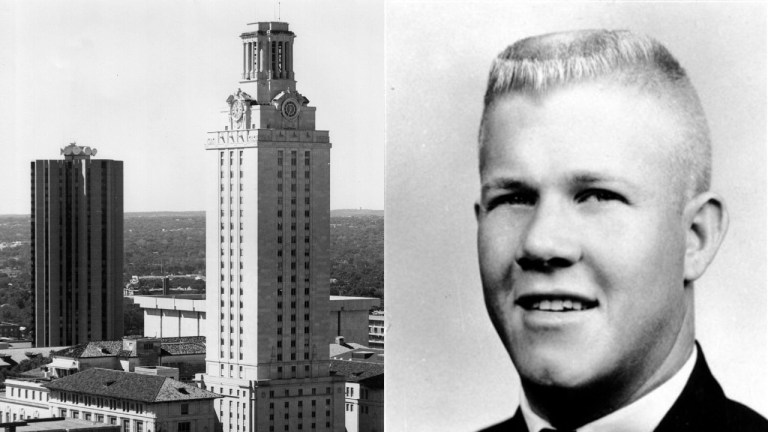
Quentin Tarantino said Targets is “still one of the strongest cries for gun control in American cinema. The film isn’t a thriller with a social commentary buried inside of it (the normal Corman model), it’s a social commentary with a thriller buried inside of it… It was one of the most powerful films of 1968 and one of the greatest directorial debuts of all time. And I believe the best film ever produced by Roger Corman.”

Targets is also remembered for its excellent retelling of the Babylonian folklore, “An Appointment in Samara”.
Jaws (1975)

Steven Spielberg’s iconic blockbuster was based on a 1974 novel by Peter Benchley. Benchley was inspired by a shark fisherman in Montauk, New York named Frank Mundus. He was famous among locals for his colorful character and for catching a 4,500 pound great white shark with a harpoon and a 3,427-pound great white, for which Mundus still holds the record for largest fish ever caught with a rod and reel. Later in life as some of his practices (like harpooning sharks) became illegal, Mundus became an advocate for shark fishers to practice catch and release.
The Exorcist (1973)
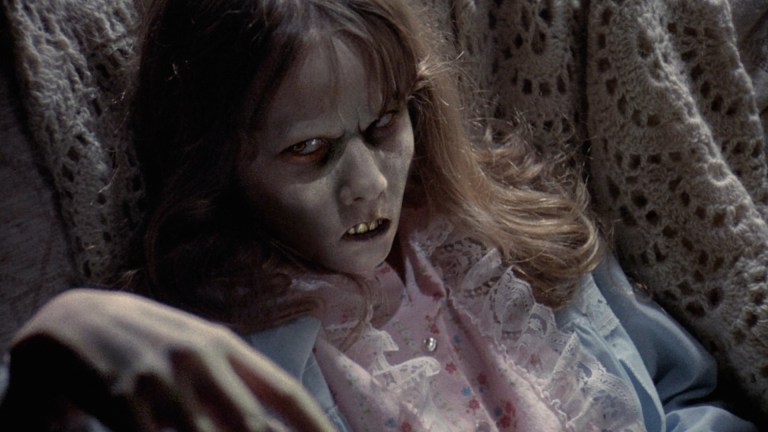
One of the most successful horror movies of all time, and one that could reasonably be cited as one of the reasons for the “Satanic Panic” of the 1980s, was inspired by the real-life tale of a boy from Maryland who was named “Roland Doe” to protect his real identity.
Extremely odd things started happening as Roland reached adolescence in the late 1940s: scratching sounds in the basement, beds suddenly shaking, the sudden smell of excrement filling the room, etc. A student who shared a class with Roland recalls one incident:
“The desk was shaking and vibrating extremely fast and I remember the teacher yelling at him to stop and I remember he kind of yelled back ‘I’m not doing it!”
Just as in The Exorcist, things escalated from there. Roland’s parents gave up hope that his condition was medical and instead turned to the Catholic Church for an exorcism. He went through dozens of exorcisms.
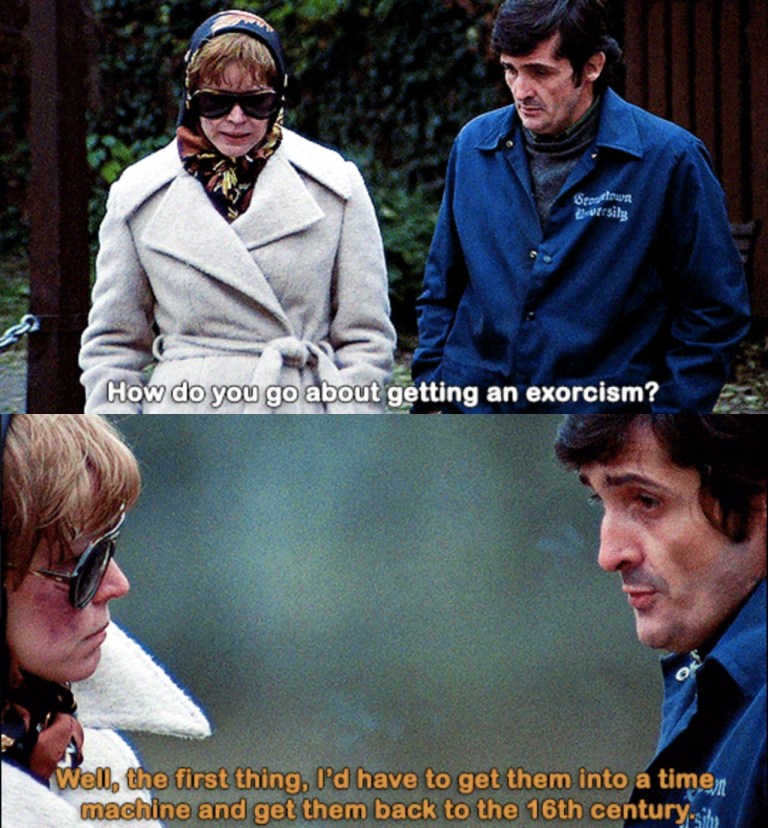
Years later, notes were found in the St. Louis institution where the exorcisms were performed, graphically detailing the events as they happened. Author William Peter Blatty became privy to the notes. He changed the main character from a boy to a girl, wrote a novel called The Exorcist, and the rest is history.
The Exorcist was a huge commercial success, becoming one of the most popular movies of all time with people waiting in long lines just to see the film based on word of mouth. After seeing the movie some viewers became dizzy, vomited, developed insomnia, and even had miscarriages. A new term, cinematic neurosis, was coined to describe the phenomena. The film also created a “Satanic Panic” that is responsible for the death of at least one mentally ill girl whose parents were convinced she was demonically possessed.
The Texas Chainsaw Massacre (1974)

It’s impossible to call this classic film “real.” It’s a work of fiction more or less through and through. That said, some inspiration for the character of Leatherface comes from a real-life murderer/body snatcher, Ed Gein, also known as the Butcher of Plainfield or the Plainfield Ghoul.
The film’s main killer, “Leatherface,” was fictional, but in real life, Ed Gein made masks and other wares out of human bodies. Director Tobe Hooper also says his film was inspired by Texas killers Elmer Wayne Henley and Dean Corll, who lured and slaughtered boys near Houston in the early 1970s. Hooper’s writing partner, Kim Henkel, said he saw a news interview with Elmer Wayne that laid the foundation for Texas Chainsaw‘s cannibal family: “He had this conventional morality at that point. He wanted it known that, now that he was caught, he would do the right thing. So this kind of moral schizophrenia is something I tried to build into the characters.”
The Town That Dreaded Sundown (1976)
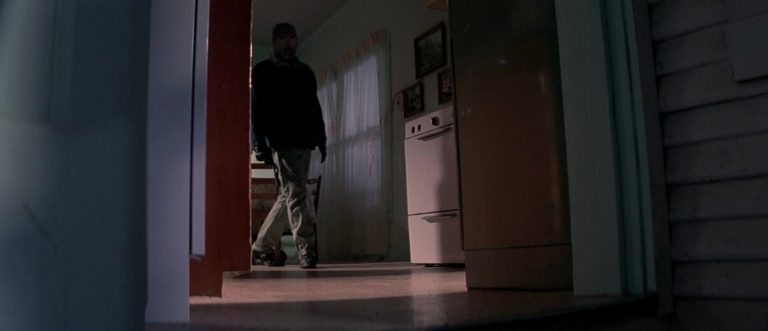
In the spring of 1946 a masked killer stalked, murdered, and terrorized people in the twin cities of Texarkana, Texas and Texarkana, Arkansas. Within a 10-week time span, the killer assaulted eight people, murdering five of them. Like the Zodiac killer, most of the murders took place near lover’s lanes.
The media referred to these killings as the “The Texarkana Moonlight Murders,” and Charles B. Pierce’s The Town That Dreaded Sundown retells the story on the silver screen. The two people who survived attacks by the Phantom could only describe him as about 6 feet tall and wearing a pillowcase with eye holes cut out. The name of the movie refers to the hysteria the area went into with so many murders in such a short amount of time. Police investigated over 400 suspects, but the identity of the Phantom Killer remains unknown.
The Town that Dreaded Sundown is heavily fictionalized. For instance, the infamous “trombone” scene was scripted for morbid entertainment value, there is no evidence that the Phantom killed anyone this way. The closest link to reality is that one of the victims was playing a saxophone in a band the night she was killed. The movie also has a series of strange moments of comic relief.
A remake of the film was made in 2014, and the 1976 version is screened in Texarkana every year on Halloween.
Eaten Alive (1976)
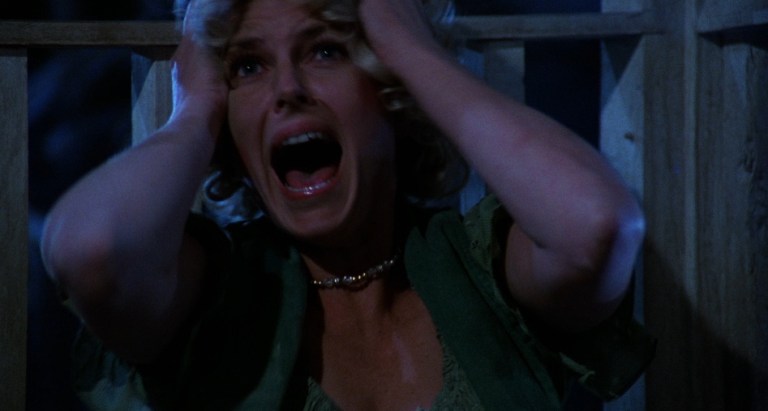
Eaten Alive (1976) is a campy exploitation film directed by Tobe Hooper. The movie is about the owner of a run-down hotel in Texas who murders and/or feeds people to his pet crocodile. The owner, Judd (Neville Brand), and the basic premise of Eaten Alive were inspired by a man named Joe Ball whose real crimes grew to urban legend status in parts of Texas.
According to Texas Monthly, After prohibition ended, Joe Ball opened a tavern in the small town of Elemdorf, Texas (near San Antonio). Ball’s tavern was known locally because of its rowdy clientele, and also because of the live alligators Ball kept in a pool out back. A main attraction at the tavern was feeding time for the alligators, and Ball would sometimes throw in live cats and dogs to please his audience.
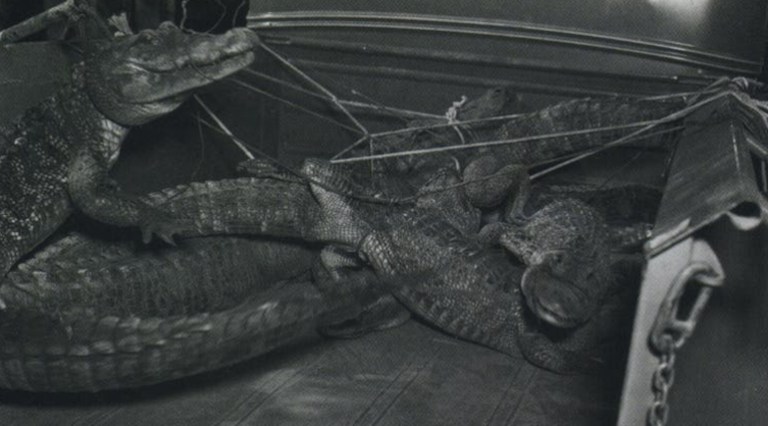
Multiple disappearances of women in Ball’s life (who either worked for him or were romantically involved with him) led police to begin investigating Ball… at which point he committed suicide. Ball is known to have killed two women. No evidence was ever found that Ball fed anyone to his alligators, but the rumors spread and grew over the years regardless. Though many of the women who supposedly disappeared from Ball’s life were eventually found to be alive, some were never located. As casual as Ball seemed to be about killing, it’s entirely possible there is a lot of truth the rumors.
The Amityville Horror (1979)
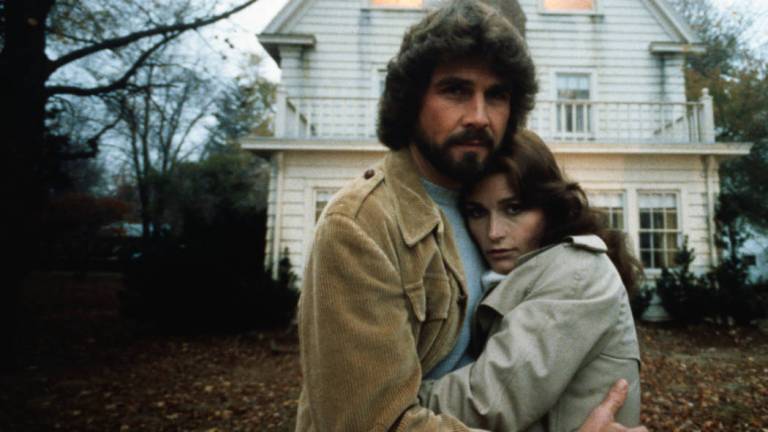
The truest horror story that happened in the home at 112 Ocean Avenue in Amityville, NY is that on November 13, 1974 Ronald DeFeo, Jr. shot and killed his parents, brothers, and sisters, annihilating his entire family while they slept. DeFeo confessed to the murders but pled insanity during his trial. An insanity plea involves not whether the defendant experiences mental health issues, but whether they were, at the time of the crime, unaware that the crime was wrong. As part of DeFeo’s confession involved telling police how he discarded evidence, he was clearly aware that what he had done was wrong. He was convicted of six counts of second degree murder and died in prison in March 2021.
One year after the DeFeo murders, George and Kathy Lutz bought the house and moved in with their three children. The Lutz family fled the Amityville home in the middle of the night 28 days later after experiencing an increasingly malevolent haunting. The family claims they saw glowing red eyes, experienced sudden levitation, and saw objects fly around the room. George Lutz says he kept waking up at 3:15AM—the time the DeFeo murders happened. The Lutz family story was immortalized in the best-selling Jay Anson book The Amityville Horror and subsequently made into the 1979 film starring James Brolin and Margot Kidder. There are now over 30 films based on the Amityville haunting and the story is likely responsible for one of the highest grossing horror franchises of all time, The Conjuring, which follows paranormal investigators Ed and Lorraine Warren.
Many people have come forward to debunk the Amityville haunting including the priest the Lutz family say blessed the home and the subsequent owners who could not verify the damage described in the book. In 1979, the lawyer who represented Ronald DeFeo Jr. in his murder trial, William Weber, told People “I know this book is a hoax. We created this horror story over many bottles of wine.”
After decades of silence, Daniel Lutz—who was in his teens when the family lived there—came forth with a documentary called My Amityville Horror (2013) and insisted it had all happened: “I was possessed by a spirit I couldn’t get rid of on my own. I just wanted somebody to believe me. It has been in my dreams my whole life.”
Friday the 13th (1980)
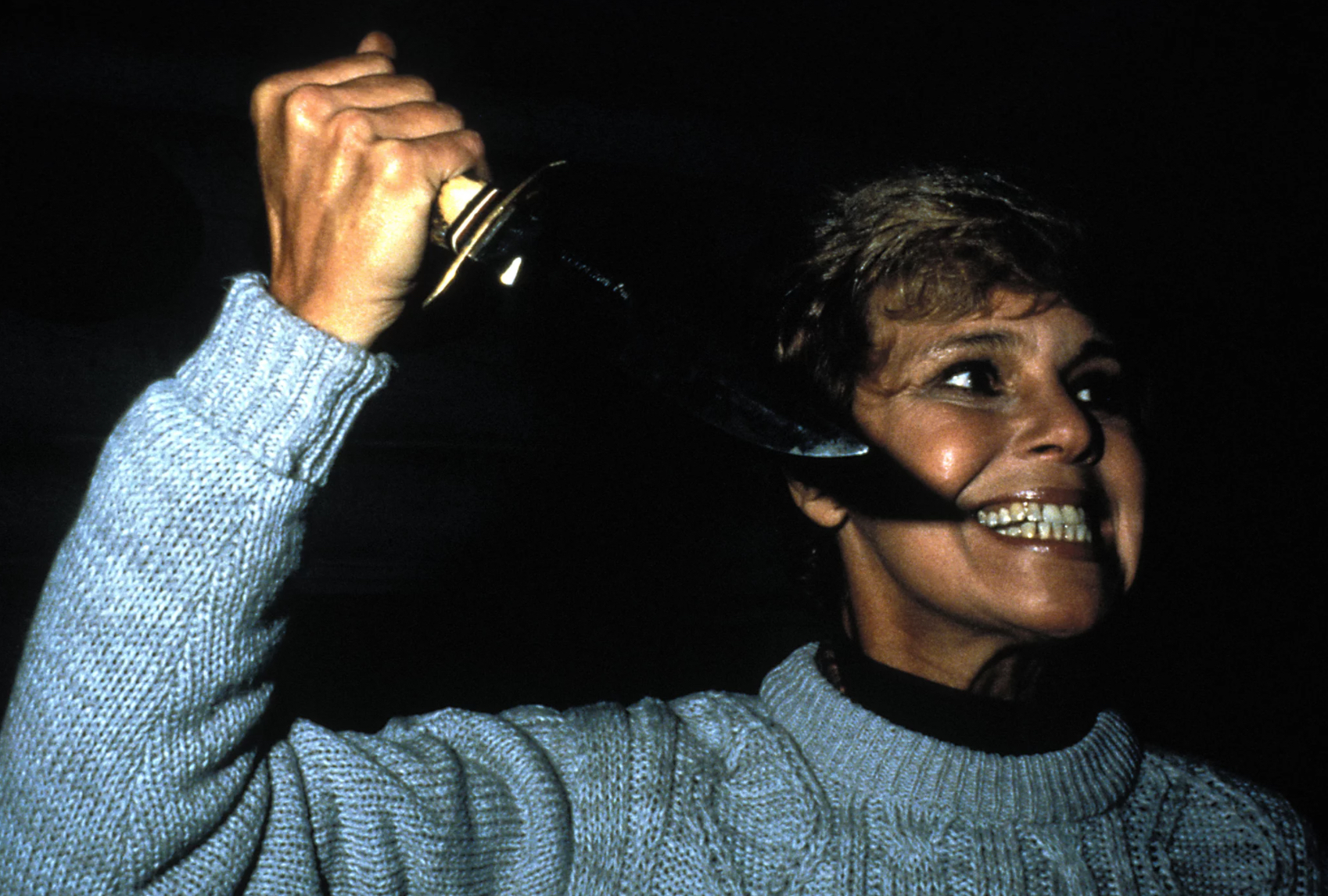
Originally titled A Long Night at Camp Blood, this iconic slasher franchise was inspired by one of the grisliest unsolved cases in Finnish history. On June 4, 1960 two teenage couples went camping at Lake Bodom in southern Finland. Between 4-6am the following day three of the teenagers were stabbed and bludgeoned to death. The killer attacked them through the wall of the tent, rather than going inside or forcing the victims to leave the tent. The surviving 18-year-old was found outside of their tent with stab wounds and a broken jaw, he said the group had been attacked by someone dressed in black with “bright red eyes”.
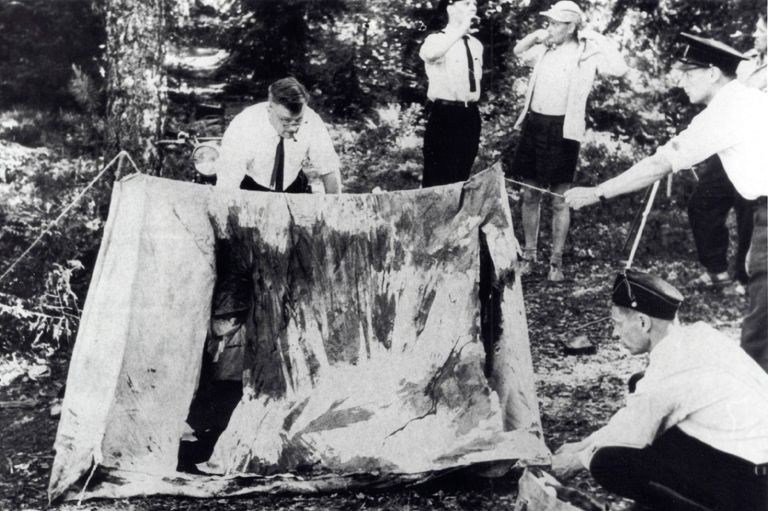
Theories about the murders include the surviving teen, Nils Gustafsson, being the murderer although personal items were taken from the scene and those, along with the murder weapons, were never found. A Finnish slasher movie, Lake Bodom (2016), is also inspired by the case.
The Entity (1982)

The Entity (1982) is inspired by the 1974 case of Doris Bither, a mother of four who alleged that the ghosts of three men were sexually assaulting her. Bither was studied by doctoral students in parapsychology at University of California, Los Angeles, who later served as technical advisors for the movie. The case became known as “the Entity haunting.” Many dismiss it as a result of the Satanic panic that took place as a result of the popularity of The Exorcist, however the physical injuries of Doris and her family members as well as strange light formations around the family were well documented by the doctoral students.
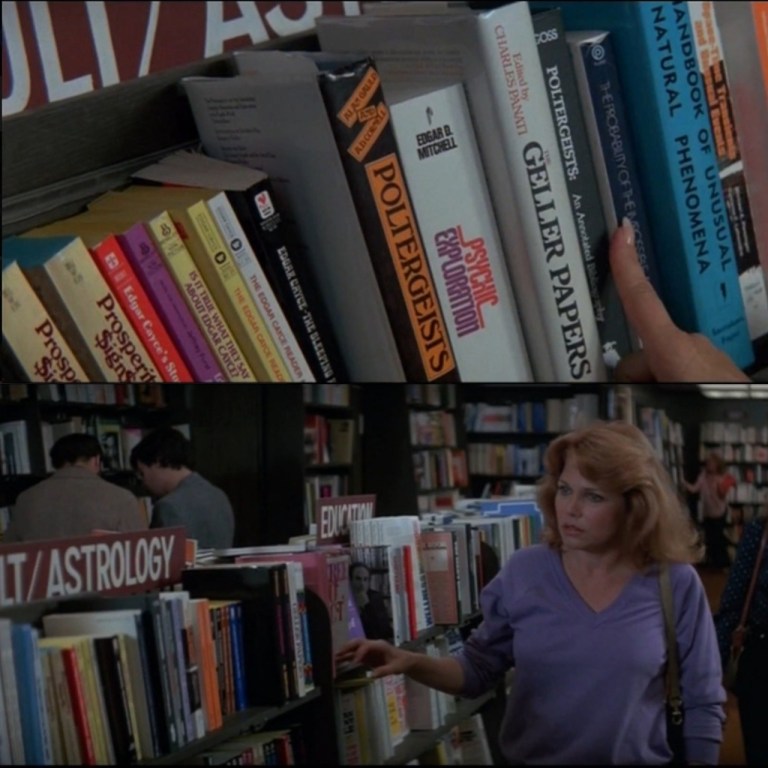
One of the strangest coincidences in The Entity case is that Doris Blither’s son was thrown across the room and broke his arm as a result of the haunting. While filming, the actor who played her son also broke his arm while acting out the scene based on the real event. The Entity takes many liberties and is a generally well-received horror/thriller movie from the 80s. On closer inspection, despite the sexual violence, it is also a rather feminist tale with an incredibly powerful female lead played by Barbara Hershey.
Poltergeist (1982)

Steven Spielberg created the story used for Poltergeist (1982), and Tobe Hooper directed the collaboration. Spielberg says he conceived of the idea as a sequel to his film, Close Encounters of the Third Kind (1977). This time, rather than danger coming from the skies, an idyllic suburban family home was the source of terror.
This cult classic is based on the real story of James Herrmann and Lucille Hermann of Long Island, New York in 1958. The Herrmann family reported real poltergeist activity when they moved into a new home, such as bottle caps “popping” off of the bottles at random and bookshelves falling over for no reason. Inviting a priest to bless the house only made matters worse. When Lucille was asked if she had watched The Poltergeist movie, she had a chilling response: “I never saw Poltergeist. I felt I had my own nightmare.” It’s one thing to watch a scary movie; it’s a whole different thing when your actual life is one.

In a case of real life imitating art imitating real life, some people consider Poltergeist to be a cursed movie. Heather O’Rourke who played Carol Anne died at just age 12 from complications of a bowel obstruction. Dominique Dunne who played Dana died at age 22 when her ex-boyfriend strangled her to death. Her ex, John Sweeney, served only three years and seven months for her murder. Part of the Poltergeist curse may be due to Steven Spielberg’s insistence on using real human skeletons during filming.
Angst (1983)
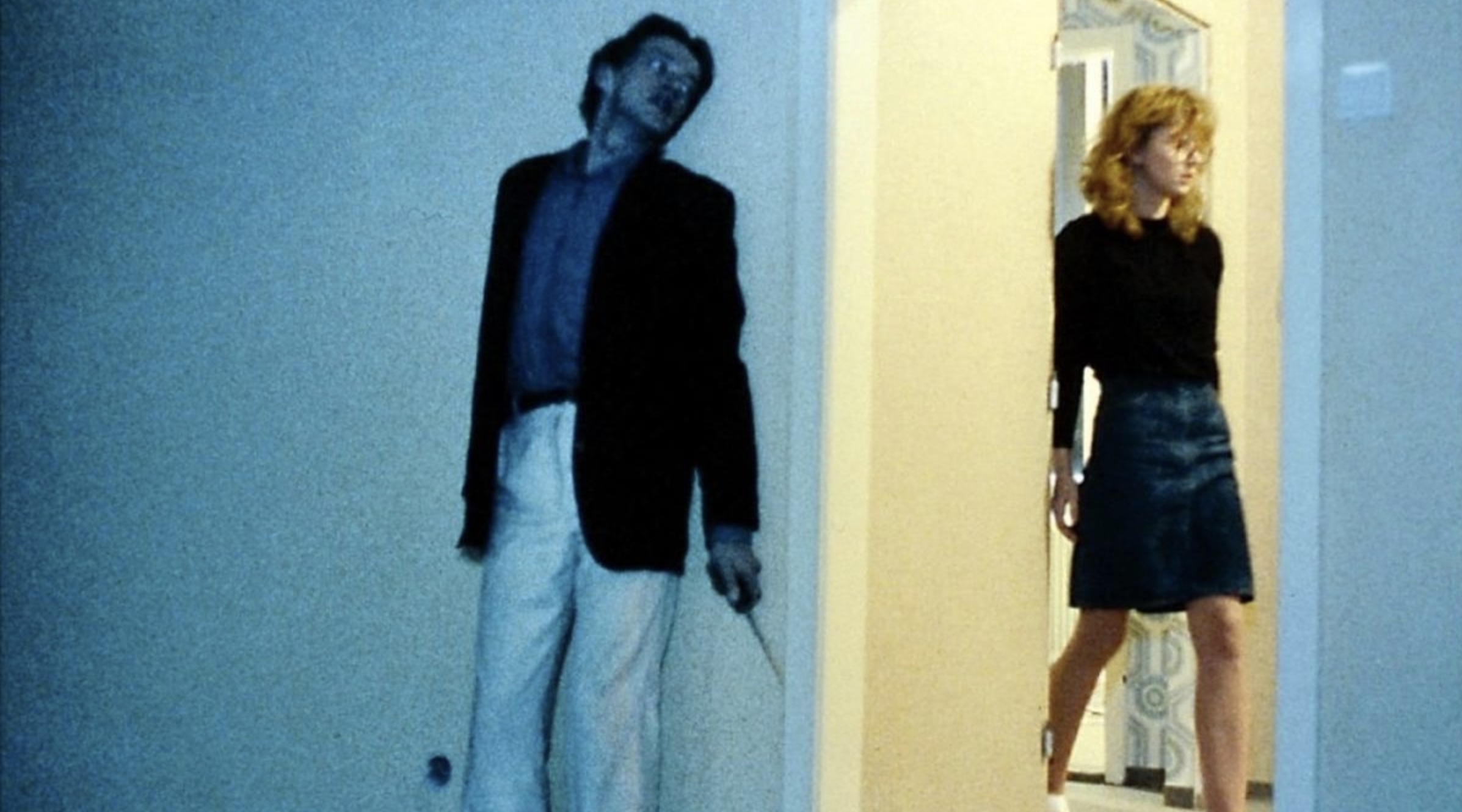
A violent, disturbing and intense film about a serial killer who is released from prison and immediately goes on the prowl for new victims. Angst is loosely based on the real life mass murderer Werner Kniesek, who stabbed his mother when he was 16 (she survived). After murdering an elderly woman Kniesek pled insanity and was released after 8 years for good behavior. Upon release, he broke into a family’s home near Vienna where he tortured and murdered the three inhabitants. Kniesek was caught with the three bodies in his trunk while on a shopping spree with the family’s stolen money. He said he was motivated by “a sheer desire to kill”.
A Killer in the Family (1983)
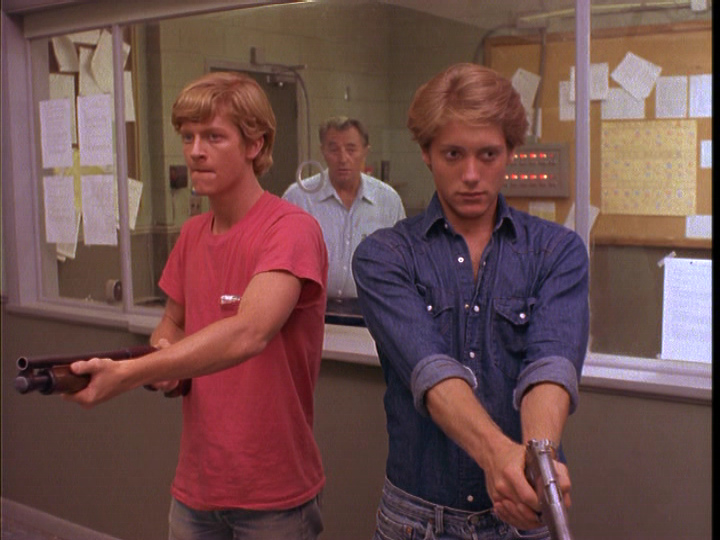
This made-for-television movie is based on a true story where a father convinces his three sons to help break him and his cellmate out of prison. They do. Incredibly, at the time inmate’s families were allowed picnics with them. The sons brought a cooler filled with sawed off shotguns and revolvers.
After escaping, things spiral completely out of control, and the prison-break story turns into even more crime, including a killing spree. The real name of the father that started all of this is Gary Tison, and the local Arizona newspaper has an in-depth explanation of his life and crimes.
A Nightmare on Elm Street (1984)
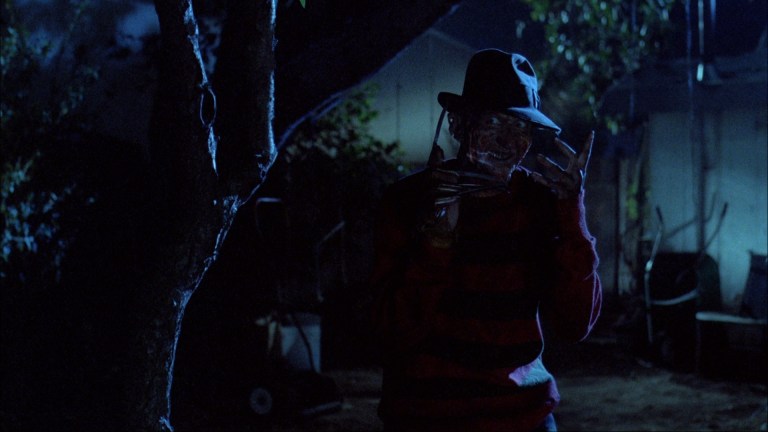
For casual horror fans, it might come as surprise that this 80s horror-thriller from Wes Craven was inspired by an actual event and a particularly disturbing moment in world history in Southeast Asia after the Vietnam War. After the end of the Cambodian Civil War in the 1970s, the Communist Party of Kampuchea took control of the country and killed over a million people under the rule of Pol Pot. The locations where this genocide was done are known as “The Killing Fields” — and Craven was inspired by a family that escaped them to the United States, but one of their children ended up still having horrible dreams about being murdered.
Wes Craven explains in his own words in a 1999 interview with Robert J. Emery:
The history of A Nightmare on Elm Street is kind of interesting. I read a newspaper article in the LA Times about an immigrant, a recent immigrant, to the United States. A young man who had complained to his parents about severe nightmares. I think they were from Cambodia, and he was assured that nightmares were not that unusual, he shouldn’t be so afraid. He started staying up and refusing to sleep. The family became very concerned, and they sought the help of a doctor. The doctor prescribed sleeping pills. The young man apparently took them, and in the end it turned out he did not—he was taking them and putting them aside. He had a coffee pot in his room after a while to stay awake, and nobody knew quite what to do. At one point, he was downstairs watching television in the middle of the night and he fell asleep. And his family noticed, finally, that he was asleep, and they brought him up to his bed. The whole family went to bed themselves, thinking, “Thank God, finally he’s sleeping.” Then they heard screams an hour later, ran into his room, and he is thrashing in his bed. By the time they got to him, he was dead…
What makes this true story even creepier, and unbearably morbid, is that many of the young men that fled Cambodia during the genocide also experienced the same psychological terror, which was later classified as Sudden Unexplained Nocturnal Death Syndrome (SUNDS). This is likely the newspaper clipping that Craven read in the early 80s.
River’s Edge (1986)
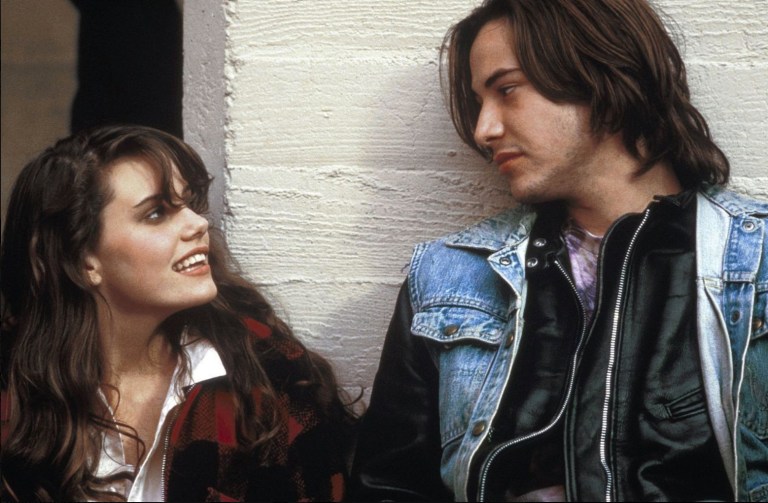
A group of delinquent teenagers in Northern California hear their friend confess that he killed his girlfriend. The group is divided with some professing loyalty to the killer and others grieving for the murdered girl. Of Keanu Reeves, the casting director said, “He walked in the door, and I went, “Oh my god, this is my guy!'”
The controversial crime drama was based on the real story of the 1981 rape and murder of Marcy Renee Conrad in Silicon Valley. The 14-year-old was raped and killed by strangulation by her 16-year-old boyfriend, who then dumped her in a ravine. Afterwards her boyfriend returned with friends, thinking they might find it interesting to see her dead body. The boyfriend, Anthony Jacques Broussard, is still incarcerated in California.
The Stepfather (1987)
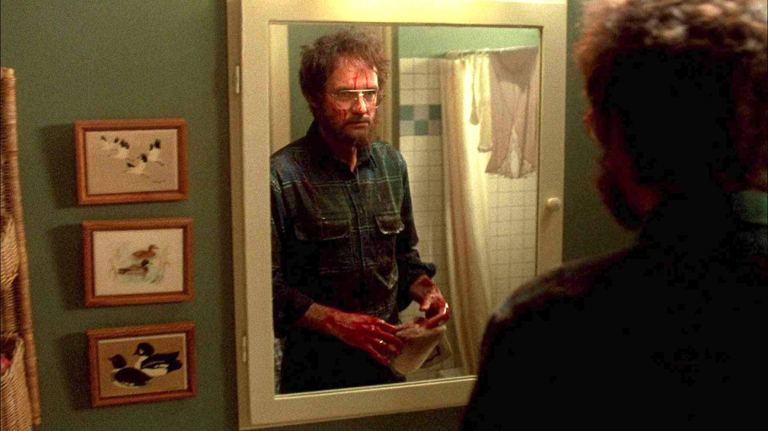
This psychological horror movie was inspired by the crimes of real life mass murderer John List, who killed his wife, mother, and three children in New Jersey in 1971. Like the film’s title character Henry Morrison (Terry O’Quinn), List carefully planned his murders, destroyed photos of himself, and altered his appearance and left town to create a new life elsewhere. List was not caught for 18 years, until he was featured on a 1989 episode of America’s Most Wanted.
List’s capture was a major success for the team working the case. The America’s Most Wanted episode featured a three-dimensional age-progressed clay bust created especially for the show by forensic sculptor Frank Bender. When the episode aired, a neighbor recognized List and he was arrested. Even after a fingerprint match and a conviction for five murders, List denied responsibility. In 1990 List was sentenced to serve five life sentences in prison where he died in 2008.

Child’s Play (1988)

Remember that evil — but also kind of comical — killer doll Chucky? That little guy was possibly inspired by a real-life haunted doll, Robert the Doll. In the 1900s a young boy, Eugene Robert Otto, was given a doll. Just like Chucky, the doll ended up terrorizing the child and other children that would inherit it. Now it’s in a museum and advertised as a doll suffering from demonic possession.
The staff where the doll is held in Key West report strange things around it like Robert’s facial expression changes, hearing demonic giggling, and some have even seen Robert put his hand up to the glass.

As you can see, Robert the Doll does not really look like Chucky, but this is the doll where the whole Child’s Play/Chucky horror franchise possibly started. Series creator Don Mancini has never confirmed the rumors, instead referencing killer dolls in movies and on TV like the Zuni fetish doll from Trilogy of Terror (1975) and Talky Tina from The Twilight Zone, as well as the craze surrounding Cabbage Patch Kids, as inspirations. Additionally, David Sloane, author of a book on Robert the Doll, outright refuted the claims that Chucky is based on Robert in an interview for Florida Weekly. Regardless, the eerie parallels make for a fun story.
Dead Ringers (1988)
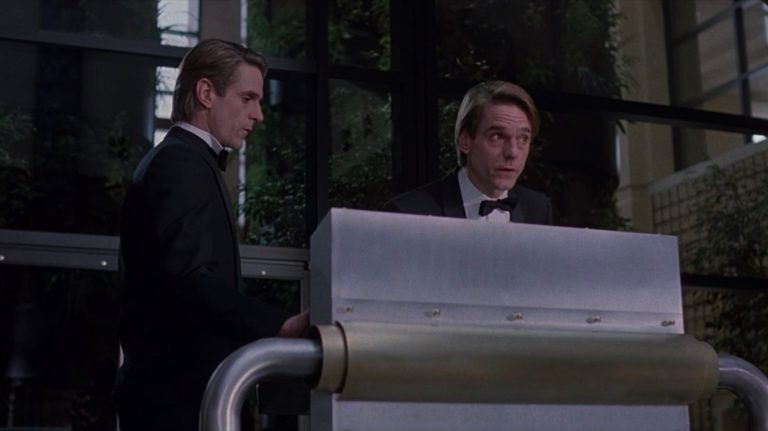
Dead Ringers (1988) is a creepy David Cronenberg film is based on two real people: Stewart and Cyril Marcus, identical twin gynecologists who practiced together in New York City. In Cronenberg’s version of the story, the two twins share women, trade places during surgery, and exhibit other creepy behavior. Think of this movie as American Psycho (2001) meets the television Show Nip/Tuck, but with twins. Cronenberg’s version is fictionalized, however, the strange ending where the twins isolate more and more from society and die through what seems to be a drug overdose or barbiturate withdrawal is based on reality. That said, Stewart and Cyril Marcus in real life were bizarre people, and some who knew them say the truth about these twins might be stranger than Cronenberg’s fiction.
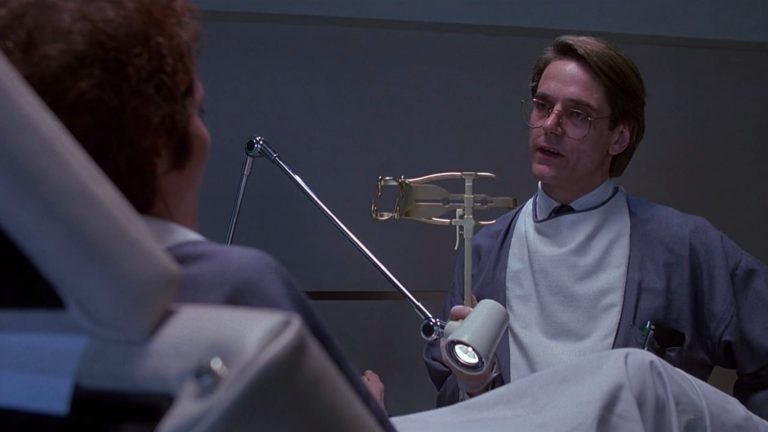
Here is how one woman describes her experience with the twins in real life.
In the summer of 1975, a pair of forty-five-year-old twins, their bodies gaunt and already partially decomposed, were found dead at a fashionable Manhattan address in an apartment littered with decaying chicken parts, rotten fruit, and empty pill bottles. The bodies were those of Cyril and Stewart Marcus, doctors who had apparently died, more or less simultaneously, as the result of a suicide pact.
Like many people, I was shocked by the information. Two things contributed to my astonishment. One was the men’s twinship, the doubleness that had given them a mutual birth date and now a mutual death date as well. Another was the men’s prominence; they had been among New York City’s most well-known obstetrician-gynecologists.
You can read the rest of the story at The Line Up. Here also is the original New York Times article about their death.

Too Young to Die? (1990)
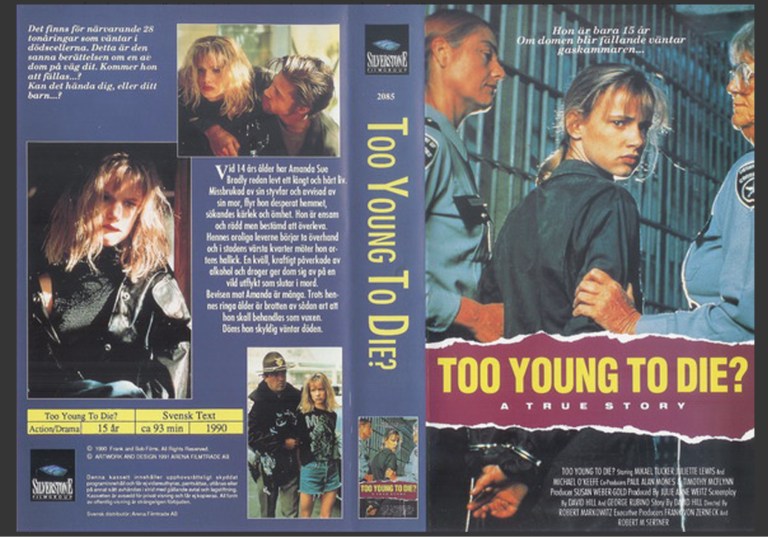
Too Young to Die? was a TV movie about the morality of the death penalty. An abused teen named Amanda (Lewis) is groomed by Billy (Pitt), who gives her drugs and then suggests she murder the would-be rescuer who abandoned her, Mike (Michael O’Keefe). Amanda is arrested and tried as an adult, though she is only 15. She is convicted and sentenced to death.
The story is inspired by the case of Attina Marie Cannaday, Cannaday was a lifelong abuse victim and former child bride who had an IQ of 71. 28-year-old David Randolph Gray was charged and convicted of convincing Cannaday to help him murder her 29-year-old ex-boyfriend Sergeant Ronald Wojcik. Cannaday was only 17-years-old at the time of the murder and was sentenced to death by lethal injection. This sentence was later changed to life imprisonment and she was released from prison in 2008 on parole.
The People Under the Stairs (1991)
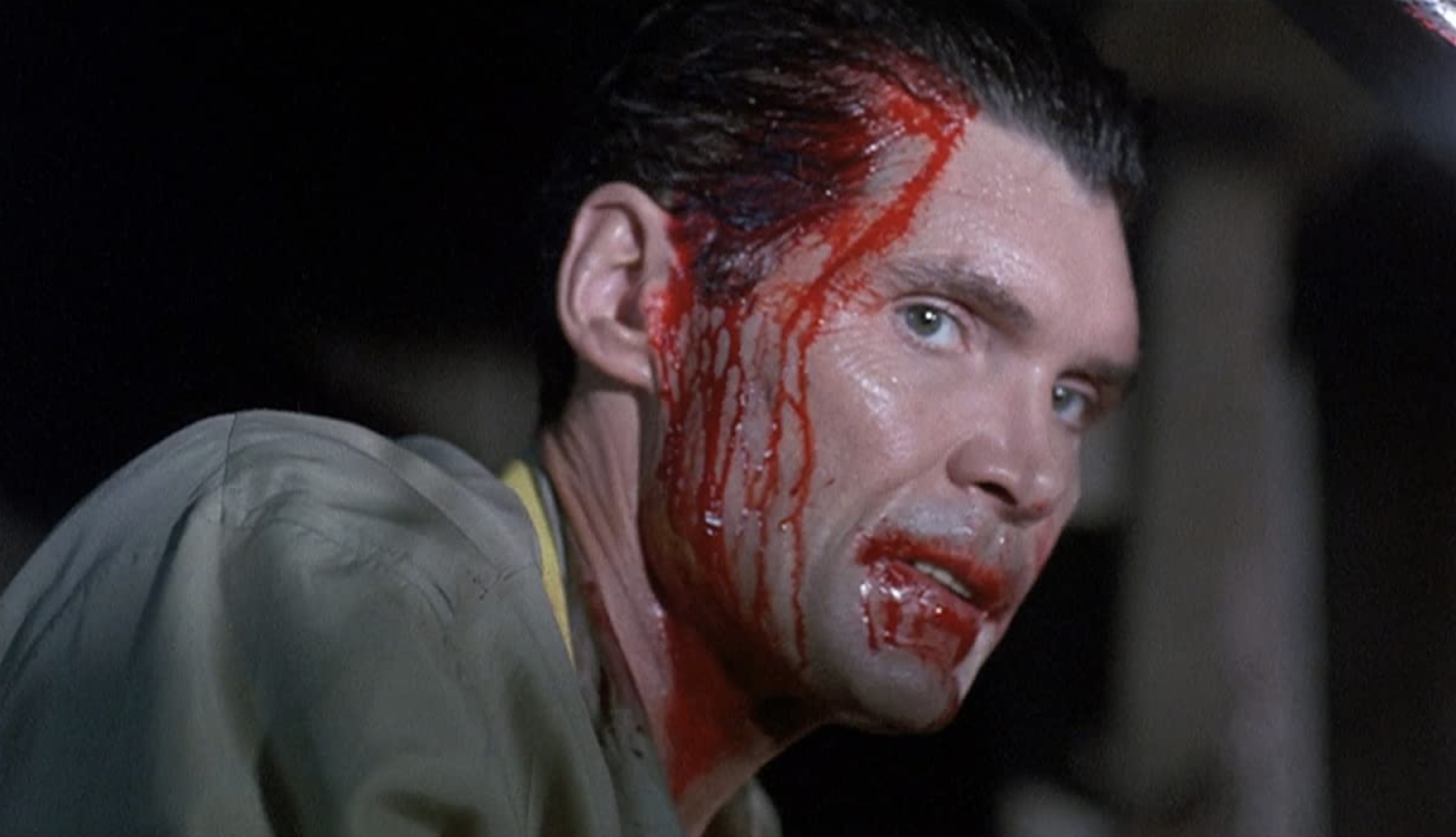
Wes Craven wrote the script for The People Under the Stairs based on a newspaper article he read about two black men who intended to rob a home in Los Angeles. To their shock, the burglars discovered children were being held hostage in the home by the home’s owners. Police became involved and the couple was arrested.
What appealed to me was the thought of a hidden truth that was radically different from the surface appearance… and the fact that this was taking place in a neighborhood where, supposedly, people were enjoying the good middle class life.
Wes Craven, on the true story that inspired The People Under the Stairs
The Silence of the Lambs (1991)

The primary villain in Silence of the Lambs (1991)—Jame “Buffalo Bill” Gumb—was inspired by not only Ed Gein, but also Philadelphia serial killer Gary Heidnik, who lured people in his van, brought them home to murder them, and kept their body parts in his refrigerator. Buffalo Bill was also loosely based on Ted Bundy. Buffalo Bill made clothes out of human skin just like Gein, kept sex slaves in his basement like Heidnik, and lured them using fake plaster casts like Ted Bundy.
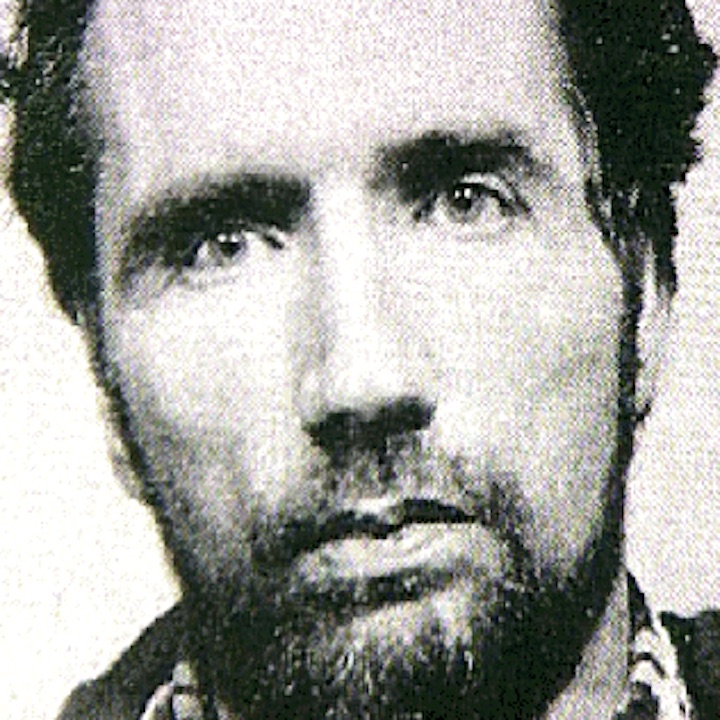
The relationship between Clarice Starling and Hannibal Lector is also based in reality. The real life Behavioral Science Unit of the FBI, as seen in the movie and on shows like Criminal Minds and Mindhunter, does exist and the FBI has interviewed serial killers to better understand how their minds work. One inspiration for the relationship is Bob Keppel, an FBI agent who interviewed Ted Bundy in the hopes he could help with the search for the Green River killer. The character of Jack Crawford in The Silence of the Lambs is based on John Douglas, the original “mindhunter” himself.
Whatever else he may be, Bill is the clear brother of Norman Bates, Leatherface, Jason, Mark (of Peeping Tom), and the rest: a male who is a physical adult but a spiritual child, locked in the embrace of his mother.
Carol J. Clover, Men, Women and Chainsaws
A Killer Among Friends (1992)
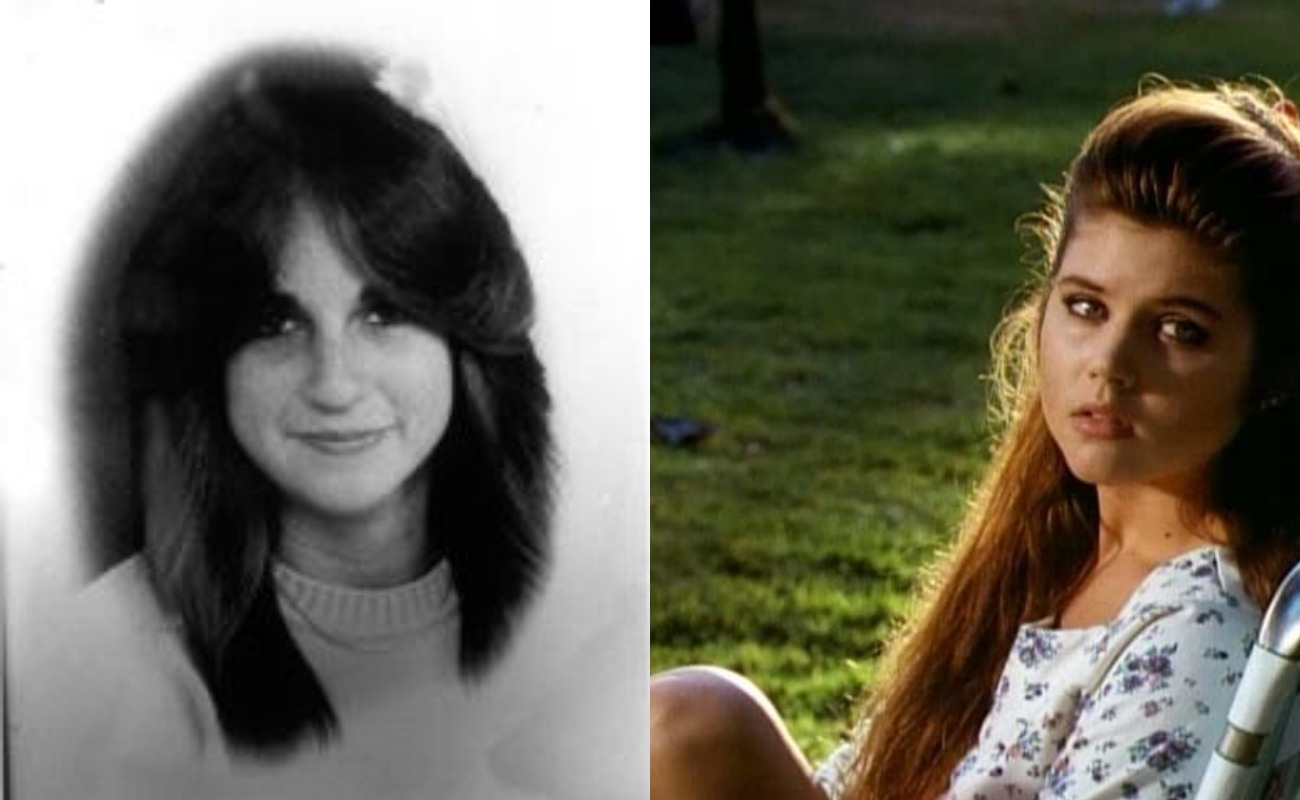
This made-for-television movie starred Tiffani Theissen while she was still playing Kelly Kapowski on the hit series Saved by the Bell. The movie was based on the real life murder of a teen named Missy Avila in California. Missy had been friends with Karen Severson since the two were 8-year-olds. When she was sixteen, jealousy caused Karen and another friend, Laura Doyle, to murder their close friend. As Missy’s mother struggled to find answers for three years, Karen helped her search for Missy and even tried to move into Missy’s bedroom. In 1990, Karen Severson and Laura Doyle were convicted of second-degree murder and sentenced to 15 years to life in prison for Missy’s murder. They have both since been released.
Candyman (1992)
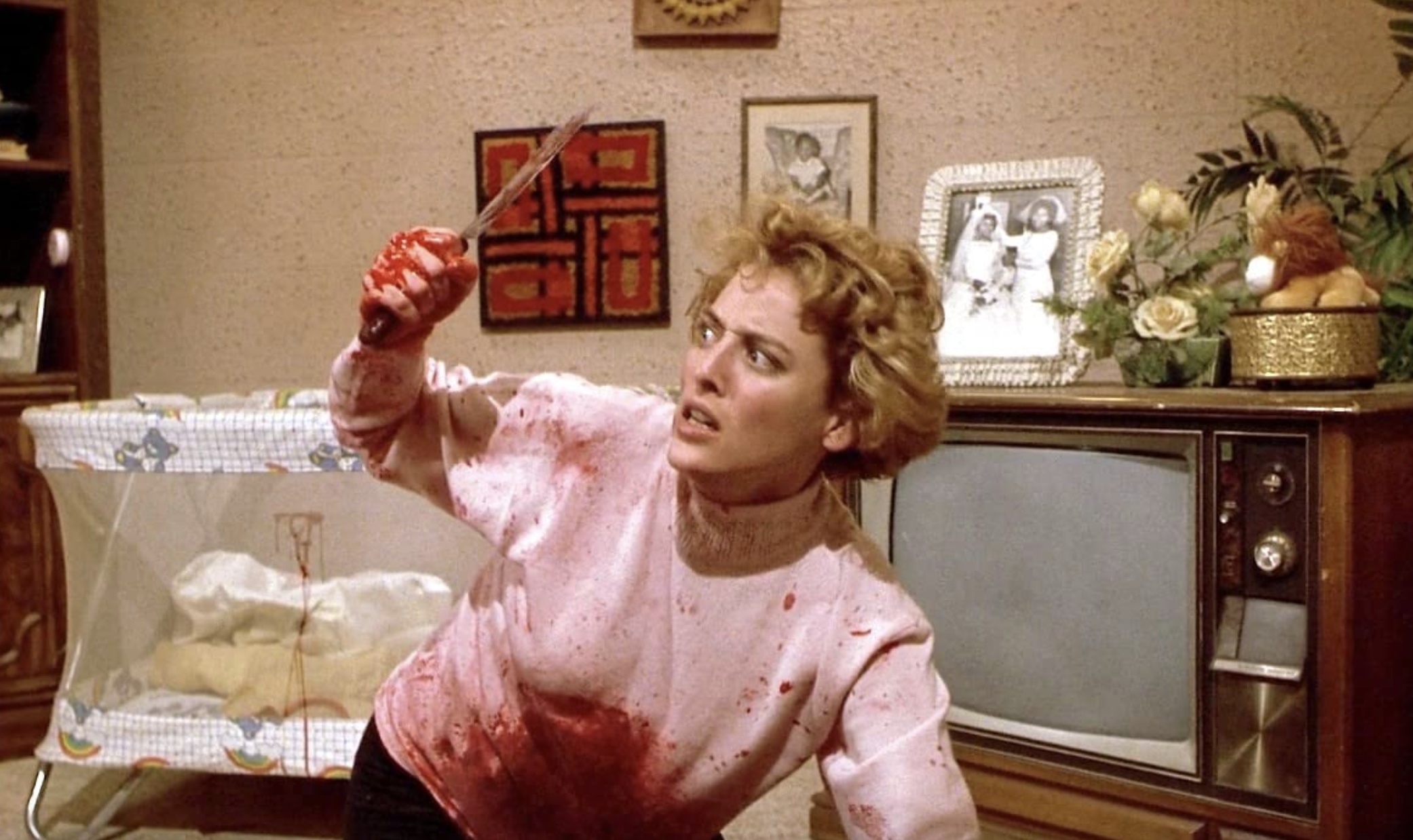
Candyman is a supernatural horror movie about a ghostly entity called “Candyman” who appears when you say his name in a mirror five times. Although the film’s original inspiration is a Clive Barker short story set in Liverpool, it was changed to Chicago for the film. Coincidently the location chosen, the Cabrini-Green Housing Project, was the site of a real life murder of a woman named Ruthie Mae McCoy. McCoy was killed by an intruder who entered her apartment through the bathroom mirror, which connected to the adjacent apartment.

Fire in the Sky (1993)
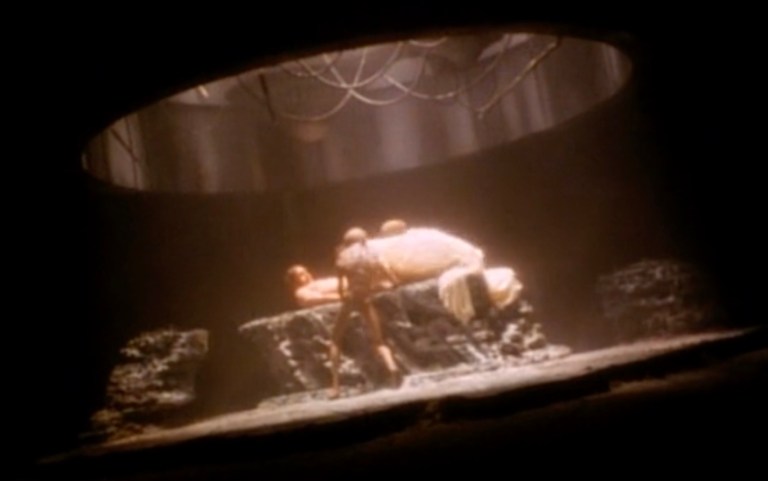
Fire in the Sky (1993) is based on, not inspired by, a story in Arizona from the mid-1970s that sounds unbelievable, but was corroborated by several sources. You can find all the details in a book by Travis Walton that explains his encounter with a UFO in 1975. He and about a half-dozen other members of a road crew were dazzled by a yellow light in the sky that upon further examination was a UFO. When the object struck Travis with a light beam and appeared to kill him, the other members fled.
Instead of being killed, though, Travis was discovered five days later—naked, shaking, and a dozen pounds lighter. He claims to have been taken aboard the spaceship.
Disturbingly, all the other members of the road crew—who, returning to town without Travis, were initially suspected of murdering Travis and concocting this story to save themselves—passed polygraph tests.
The Untold Story (1993)

On August 4 1985, ten people, all members of the family of a man named Zheng Lin, were stabbed and strangled to death inside a Chinese restaurant in Macau. Lin owned the restaurant, called the Eight Immortals, and he owed a significant gambling debt to a man who had fled Hong Kong years prior because of another gambling related murder. The killer, Huang Zhiheng, claimed the Zheng Lin and his family had left the country, and he reopened the Eight Immortals restaurant just a few days after the murders. Zhiheng ran the business for months before police finally arrested him. Media coverage of the horrific crime and its aftermath gave rise to a (racist) urban legend in which people claimed that Zhiheng used the bodies of the Lin family in the pork buns sold at the restaurant.
In 1993, highly acclaimed actor Anthony Wong starred in The Untold Story (1993), a movie based on the Eight Immortals murders. Wong plays Wong Chi Hang (an alternate spelling of Huang Zhiheng) as a creepy and deranged man with a terrifying temper. The movie seems to depict the killings rather accurately, getting the basic details on screen while sensationalizing the story with disturbing violence and a whole lot of gore. The movie also focuses on the team of police investigating the murders. The antics of the police add quite a lot of humor to the film which makes the violence feel even more unnerving.
Scream (1996)

Scream isn’t based on a pair of high school killers tormenting their classmates, but it is based on a true story. In August 1990 the city of Gainesville, Florida went into a hysteria as a serial killer committed a series of especially gruesome murders over the course of four days. The Gainesville Ripper was eventually caught and revealed to be a man named Danny Rolling who also murdered a family in Shreveport, LA.
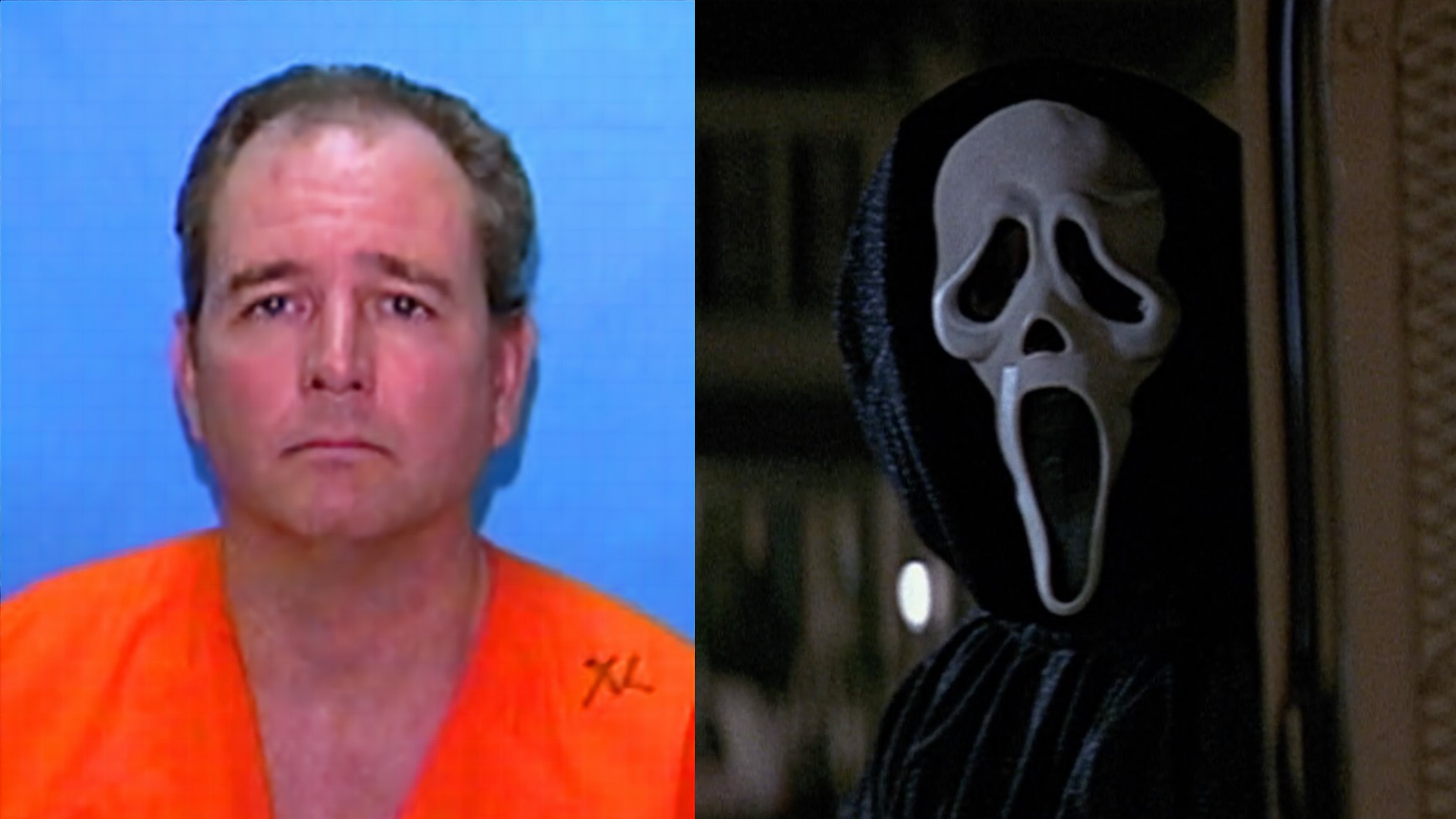
In 1995, writer and struggling actor Kevin Williamson was housesitting in Los Angeles when he caught an episode of the tabloid news show Turning Point about the Ripper. Alone in an unfamiliar home, Williamson tried to distract himself by calling a friend. Their conversation turned to horror and which scary movies they liked best. Williamson hung up the phone and wrote 18 pages about a woman talking on the phone with a killer about scary movies. That became the opening scene of Scream.
Jeepers Creepers (2001)

Jeepers Creepers has a complicated and upsetting history. The plot for the supernatural horror movie is based on a real life murder mystery that was featured on an episode of the true crime show Unsolved Mysteries. On Easter Sunday, April 15, 1990, siblings Ray and Marie Thornton went for a drive as they often did to pass the time. They noticed an aggressive man driving a truck with a particular license plate. They saw the truck a few miles later at a church and noticed the driver looked like he was disposing of a body wrapped in a bloody sheet. The siblings called the police, and it turned out they were right. The driver was Dennis DePue and he was getting rid of the body of his wife of 18 years, Marilyn DePue. Dennis died by suicide while being apprehended by police.
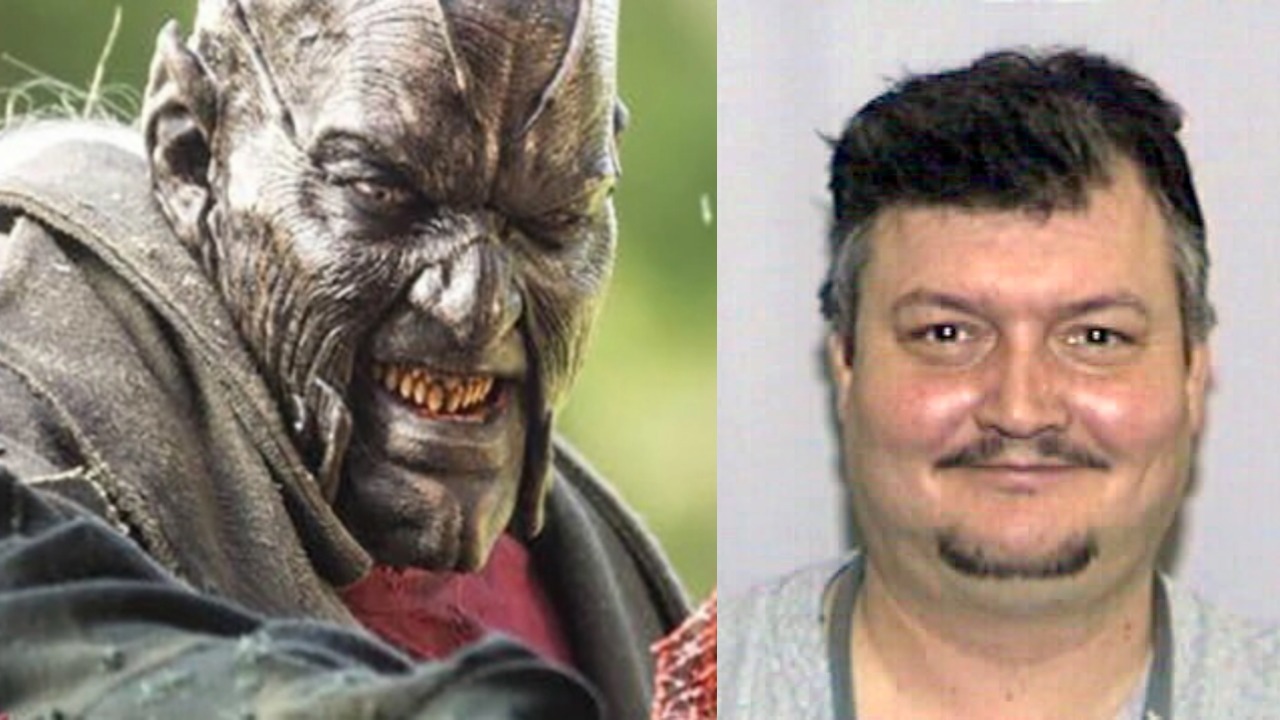
While it may not have much to do with the plot of the movie, there’s also the disturbing fact that the director of Jeepers Creepers, Victor Salva, is a convicted pedophile. What’s even worse is that the boy he was convicted of preying on was a child actor from his first film, Clownhouse (1989). Despite having filmed himself raping a child and being convicted of the crime, Salva was given a second and third (and fourth and fifth) chance not only to make films but to work with young actors.
He spent the better part of a year grooming me and my parents…Developing the trust. It was very calculated, and a long process, as it is with most pedophiles.
Nathan Forrest Winters, 2017 interview
The Eye (2002)

One of the scariest movies ever made, The Eye is a Hong Kong-Singaporean horror movie about a violinist who gets a cornea transplant to have her vision restored. Unfortunately, in addition to her sight she is now able to creepy figures that predict the deaths of those she comes into contact with. Upon investigating, the woman discovers that her eye donor, Ling, had a paranormal gift. An American remake with Jessica Alba was made in 2008 though a better American story about seeing things that “aren’t there” after an eye surgery is the “Phase I Clinical Trials” segment of V/H/S/2 (2013).
The Eye was directed and co-written by the Pang brothers. They were inspired by a real newspaper article they read about a 13-year-old girl who was able to see after a cornea transplant but died by suicide shortly after the operation. Unfortunately, little information is available about this case. The film’s penultimate scene is also based on the true events of the 1990 Bangkok gas explosion in which 88 people were killed.
The Mothman Prophecies (2002)
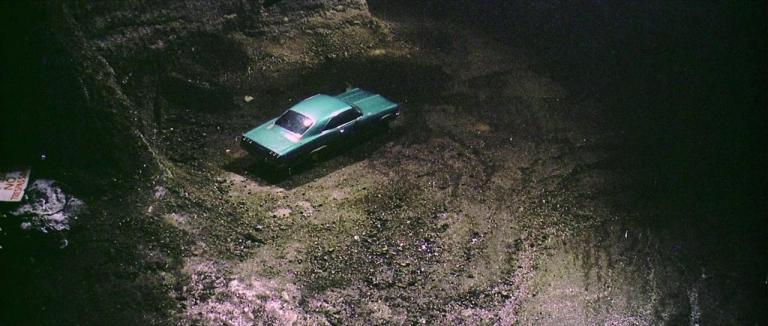
The marketing for The Mothman Prophecies heavily emphasized that the film was based on true events. How real was it, though? Particularly given this is a movie about a mysterious creature that make phone calls and can predict the future?
Well, there really is an urban legend about a being called the Mothman that is told in Point Pleasant, West Virginia. However, no actual evidence proves that this paranormal entity exists. According to folklore, the Mothman is a humanoid creature with glowing red eyes and a 10-foot wingspan. It was first seen in Point Pleasant on November 15, 1966. After a local bridge collapsed on December 15, 1967, killing 46 people, the Mothman sightings ceased.
In 1975 John Keel popularized the Mothman for the rest of the world in his book The Mothman Prophecies. This book is the basis for the 2002 film.
Open Water (2003)
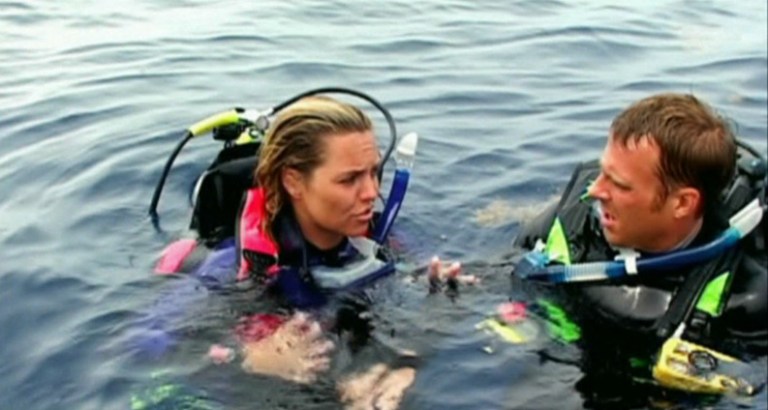
Shark movies are a dime a dozen, but Open Water is a unique shark-attack movie because it is inspired by a real story and two real people, Thomas Joseph Lonergan and Eileen Cassidy Lonergan. The married couple were on a scuba-diving excursion off Cairns in Australia. The tour company made a mistake and left without them, leaving the couple to fend for themselves in the open water. The couple was never found, and their cause of death is still unknown. They could have suffered a shark attack, which is how this film sees it.
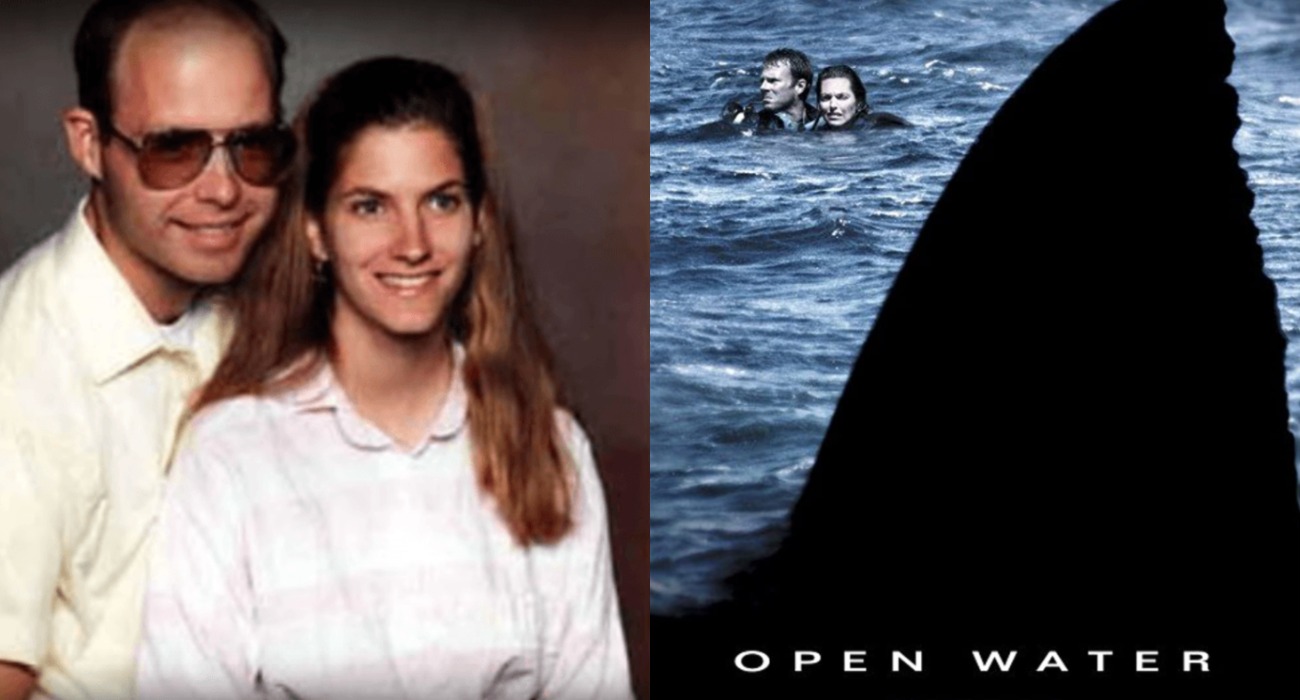
Speaking of real things, all the sharks used in Open Water were real, and the actors interacted with real sharks in all scenes. As National Geographic noted, while we have a shark fear frenzy in the media, there really aren’t that many actual shark events. There is a sequel Open Water 2: Adrift that claims to be inspired by real events, but it’s not; it was based on the short story “Adrift” by Japanese author Koji Suzuki.
The Exorcism of Emily Rose (2005)
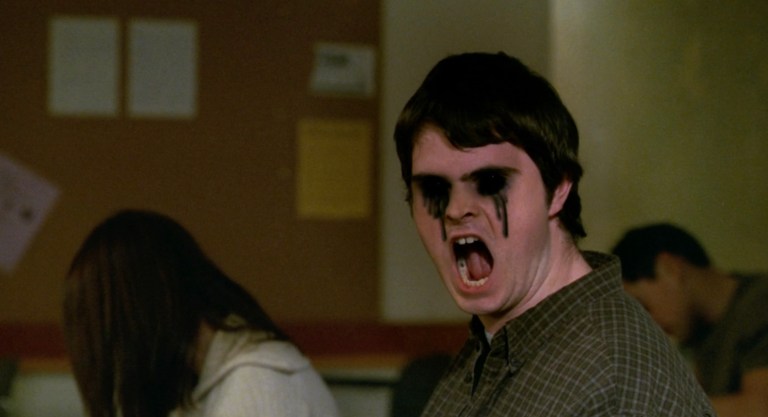
This story of an exorcism is inspired by real events that happened to Anneliese Michel, a young German woman who died of dehydration and malnutrition after a period of about 10 months during which 67 exorcisms were performed on her. Tragically, it is most likely Anneliese Michel was only experiencing mental health issues.
Anneliese was born in Germany in 1952 into a devoutly Catholic household. She was diagnosed with depression and epileptic psychosis at age 16 in 1968 and was unsuccessfully treated in psychiatric institutions. By 1972, she was suicidal. The next year, The Exorcist came out.
Anneliese experienced seizures and hallucinations, she growled, and she had “violent reactions” to religious objects. Then she started seeing “devil faces” and hearing voices telling her she’d rot in hell. She claimed to be possessed by Lucifer, Cain, Judas, Nero, and Hitler. In 1975, two priests started performing exorcisms on Anneliese. These horrifying sessions were recorded, and you can still listen to audio of them. Finally, after 67 exorcisms, she died of dehydration and malnutrition in 1976 at the age of 24.
Hard Candy (2005)
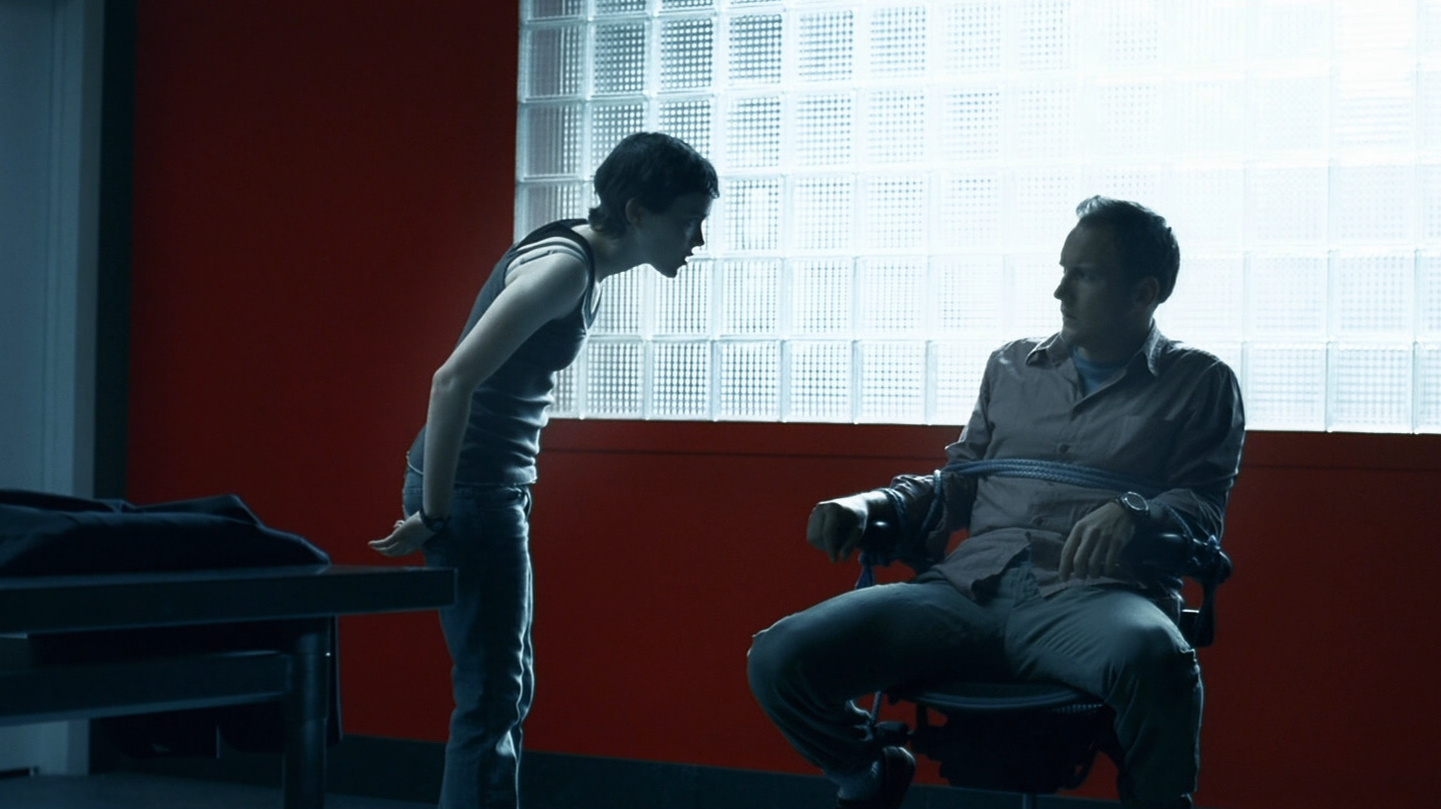
A 14-year-old vigilante (Elliot Page) traps and tortures a 32-year-old man (Patrick Wilson) who she believes is a sexual predator. Producer David W. Higgins was inspired to make the film by a 20/20 episode about Japanese school girls who assaulted and mugged men who tried to prey on them. Brian Nelson wrote a script based on Higgin’s interest in the idea.
Wolf Creek (2005)
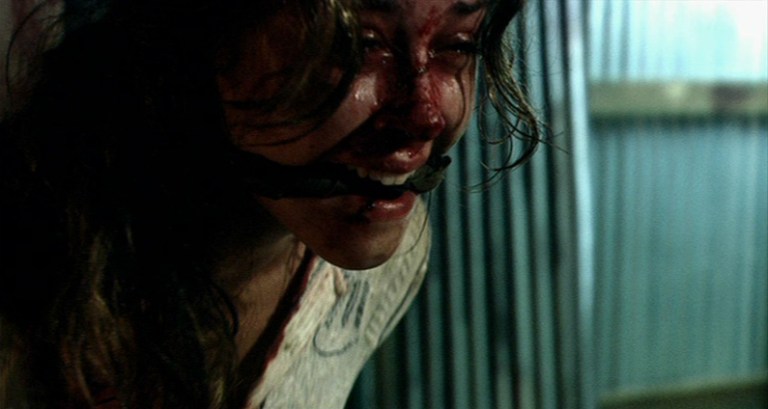
Though the script for Wolf Creek (2005) wasn’t initially based on any true stories, writer Greg McLean added elements from real crimes and killers during rewrites. The movie is about a trio of backpackers who try to escape from a serial killer after being taken captive in the Australian Outback. While the events in the film aren’t based on a specific case, a series of murders in New South Wales, Australia serves as a foundation.
Between 1989 and 1993, Ivan Milat killed at least seven (and up to 20) backpackers. One man who escaped Milat, Paul Onions, has stated that Milat picked him up as a hitchhiker, asked him probing questions, then attempted to tie him up at gunpoint. It is likely Milat followed this same pattern with all of his victims before taking them to the deep woods to kill them. Milat’s modus operandi is strikingly similar to the killer in Wolf Creek, Mick Taylor.
Additionally, the character of Mick is partially inspired by another Australian killer, Bradley John Murdoch. In July of 2001, Murdoch stopped a pair of tourists, Peter Falconio and Joanne Lees, who were traveling along the Stuart Highway in Australia. Lees managed to escape after being tied up at gunpoint by Murdoch, but the body of Falconio, who was presumed to have been shot out of sight from Lees, was never found. Just like Milat’s crimes, Murdoch’s crime is echoed in Wolf Creek even though the film is not a direct adaptation of the real events.
The Host (2006)

Bong Joon-ho’s The Host is a monster movie about a girl who is kidnapped by a giant amphibian and her family’s quest to rescue her. In the film, the monster is created by American scientists who dump 200 bottles of formaldehyde into the Han River. This mirrors a real life event where an American military official was caught dumping formaldehyde into the Han River. Joon-ho was also inspired by an incident in high school in which he believes he saw a monster climbing on the Jamsil bridge.
In 2000, Albert L. Mcfarland, a civilian official with the U.S. Army, ordered the disposal of 470 bottles of formaldehyde in the Han River. That was the start. Most monster films have a setting for the creation of the monster, and I thought that this was an incident I could use to develop a story about a monster coming out of the Han River. However, I wanted the main theme to be centered on “family.”
Bong Joon-ho, on his inspiration for The Host (2006)
Them (2006)
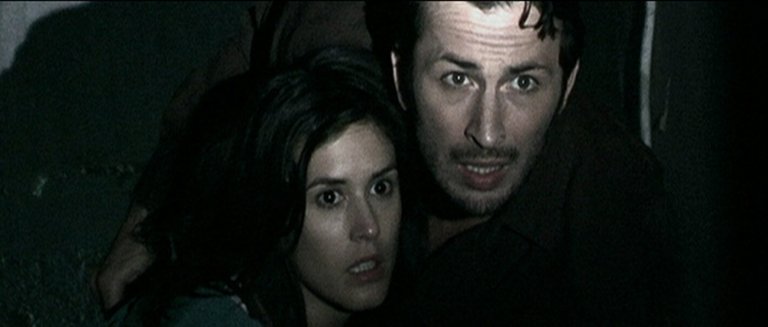
Them is a French-Romanian film with subtitles, but it isn’t heavy on dialogue and the suspense and home invasion scenes will translate to any language. The film’s intro states that it is based on a true story and it follows a couple who live in the country as violent assailants (unseen until the end of the film) try to break into their home. The “real story” the film is based on is that an Austrian couple were attacked and murdered by local teenagers while vacationing in the Czech Republic. Because this story is unverified the film has been criticized as being racist for portraying non-European union children as “savages”. For context, Them was released the same year Romania was added to the EU.
The Girl Next Door (2007)

This movie depicts an atrocious true story of child abuse and murder. Here is the real backstory explained:
Sylvia Marie Likens (January 3, 1949 – October 26, 1965) was an American teenager who was tortured and murdered by her caregiver, Gertrude Baniszewski, many of Baniszewski’s children, and several of their neighborhood friends. This abuse incrementally lasted for three months before Likens died from her extensive injuries and malnourishment on October 26 in Indianapolis, Indiana.
The torture and murder of Sylvia Likens is widely regarded by Indiana citizens as the worst crime ever committed in their state and has been described by a senior investigator in the Indianapolis Police Department as the “most sadistic” case he had ever investigated in the 35 years he served with the Indianapolis police.
The movie itself is a somewhat accurate portrayal of what happened and is very difficult to watch, though it is of course highly dramatized. For more information on what happened here after you watch the movie, consider reading John Dean’s nonfiction book House of Evil: The Indiana Torture Slaying, which goes into more detail about this case of true crime.
Black Water (2007)
Black Water (2007) is a creature feature based on a real-life animal attack in Australia. Through suspenseful storytelling, set in the mangrove swamps of northern Australia, the movie gives a dramatic retelling of a crocodile attack. A British newspaper describes the actual event the movie is based on thusly: “It began as a fun day out quad-biking in the Australian outback. But it ended in disaster – with one young man killed by a crocodile and his two friends perched all night in a tree while the predator circled below.” Creepy stuff, aye?
Vacancy (2007)
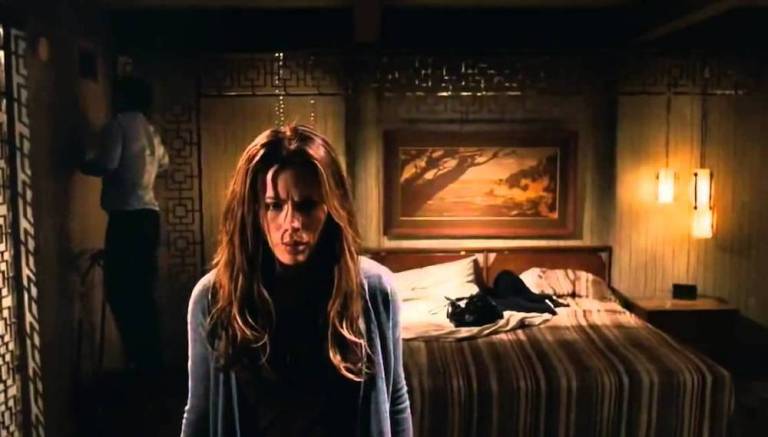
Vacancy (2008) follows an unhappy couple as they stop at a dilapidated roadside motel in the middle of nowhere. While the story of discovering the motel owner is part of a snuff film ring is totally made up on not based on any particular real-life case, there is a real story of a motel owner who created crawlspaces in the ceiling above the rooms for him to watch his guests. Famous journalist Gay Talese published a letter from such a motel owner who said he spied on his guests for over 15 years.
Changeling (2008)
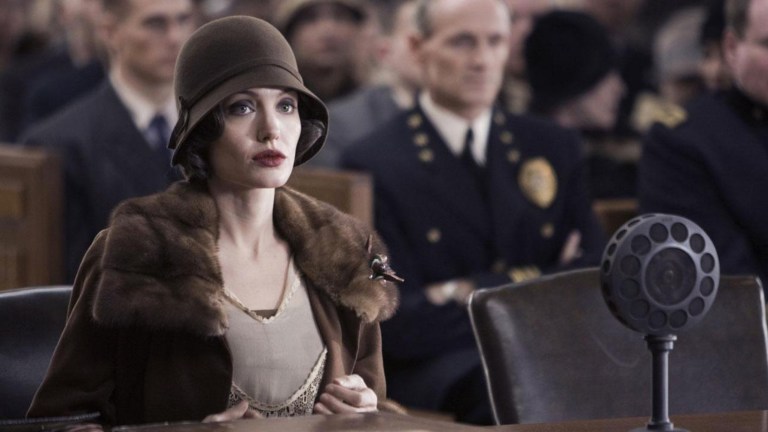
The plot of Changeling would be unbelievable if it were not verifiably true. Christine Collins (Angelina Jolie) is reunited with her missing son. However, she realizes that the boy is not actually her son. When Christine tries to correct the error, the police call her delusional and gaslight the public into believing she is an unfit mother. Christine is sent to a psychiatric hospital against her will where she meets other sane women who have been sent to the hospital for publicly disagreeing with police or public officials. It was later learned that her son had likely been a victim of the 1928 Wineville Chicken Coop murders in Mira Loma, California.

The Strangers (2008)

Writer/director Bryan Bertino says he was inspired to write The Strangers based on a creepy childhood experience where someone came to the door and asked for someone who didn’t live there (similar to the “Is Tamara home?” scene in the movie). Later, Bryan learned that several homes in his neighborhood were robbed and he believes he talked to someone who was casing his home. Bertino says elements of the Manson family murders were also the basis of his script, especially the idea of people wanting to murder strangers “for no reason.”
The Haunting in Connecticut (2009)
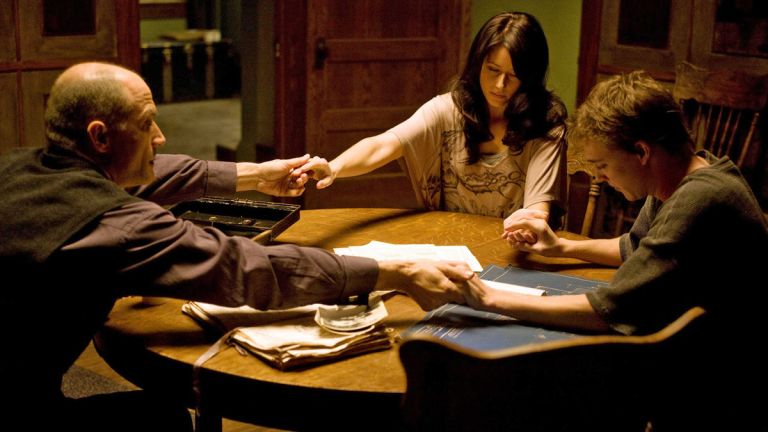
Supposedly based on the “real life” Snedeker haunting in Southington, Connecticut, Ed and Lorraine Warren say the house used to be a mortuary and the former owners were necromaniacs. Carmen Snedekker has told the story of her family’s time in a haunted house on the TV show A Haunting and Paranormal Witness. However, others say that the Warrens were grifters who made up stories to sell books.
Like the real story, the trouble in the movie starts when a family moves into a new home, but pretty much everything in this haunted house movie is fictional. The home’s current owners say there is no evidence it was ever used as a mortuary or a funeral home, and they haven’t experienced anything paranormal at all. In fact, they say the worst thing about the house is the trespassers who try to get close to see “ghosts” from the movies.
The Human Centipede (2009)

The Human Centipede is a notoriously violent (and gross) Dutch body horror movie written and directed by Tom Six. It is about a deranged German surgeon named Josef Heiter who performs grotesque experiments on human victims he drugs into submission. Six was inspired by his own joke about punishing child molesters by “stitching his mouth to the anus of a ‘fat truck driver’.” He was also inspired by learning about Nazi medical experiments conducted on human victims during World War II. One specific inspiration was Josef Mengele, known as the “Angel of Death” who loved his role selecting victims for the gas chamber at Auschwitz so much he was known to smile and whistle during his shifts.

Mengele infamously conducted experiments on surviving concentration camp hostages with no regard for his victim’s safety or suffering. He especially targeted twins, people with heterochromia iridum (people with different colored eyes), dwarfs, and anyone else with a physical abnormality. Megele’s experiments included elective amputations, infecting one twin with a deadly disease, and injecting chemicals into the eyes and hearts of living victims. He routinely killed surviving victims of his experiments so that he could dissect their bodies. When it became clear Germany was losing the war, Mengele fled to South America where he lived until his death by accidental drowning in 1979. His son, Rolf Mengele, said that his father never displayed remorse for his war crimes.
The Innkeepers (2011)

Horror director Ti West directed the slasher/haunted house movie House of the Devil back in 2009. While making the film, West stayed with other crew at the Yankee Pedlar Inn, a notoriously haunted hotel in Connecticut. The director does not believe in ghosts and says no one in the crew saw any ghostly presences at the historic hotel. This experience inspired his next film, The Inkeepers, where two hotel employees conduct paranormal investigations in the hopes of capturing evidence that the hotel is actually haunted.
The Haunting in Connecticut 2 (2013)
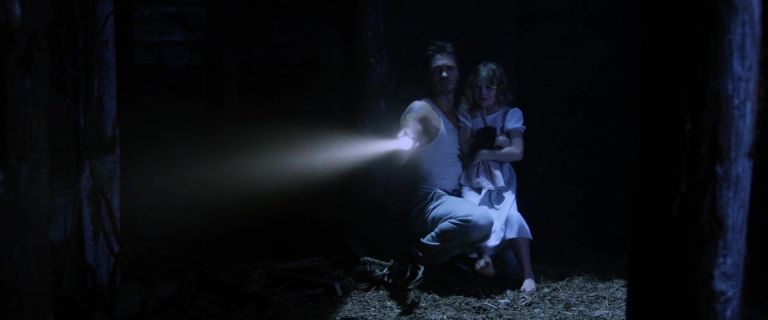
A standalone sequel to The Haunting in Connecticut, The Haunting in Connecticut 2 (2013) is actually about a haunting at the Wyrick house in Ellerslie, Georgia. After moving into a new home in rural Georgia, a girl begins to have visions of the property’s gruesome past. Later, they learn their home was once part of the Underground Railroad.
The Sacrament (2013)
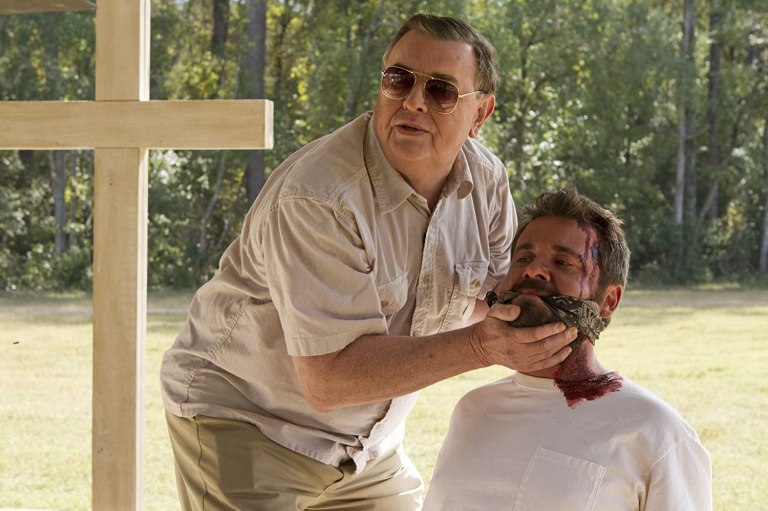
Ti West wrote and directed this found footage movie that is a fictionalized version of a VICE documentary gone wrong. Two journalists and their photographer friend travel to do a story on a remote religious cult named Eden Parish. While the film is set in the present day, it is based on the Jonestown massacre in 1978 in which 909 members of the Peoples Temple Agricultural Project died along with United States Congressman Leo Ryan at the direction of cult leader Jim Jones.

Like Jonestown, the major plot point is the cult member’s inability to leave Eden Parish both because of the remoteness of its location and because of pressure from cult leaders. The presence of the journalists drives the paranoid cult leader to initiate a mass suicide by way of drinks mixed with cyanide. Armed men shoot members who refuse to commit suicide.
The Conjuring (2013)

Ed and Lorraine Warren were a pair of paranormal investigators who consulted on the Amityville Horror case. They also attached themselves to this other real-life case that involved an allegedly haunted farmhouse in Rhode Island that was occupied by the Perron family. To this day, Lorraine Warren insists the haunting was real:
The things that went on there were just so incredibly frightening. It still affects me to talk about it today.
USA Today
Andrea Perron, the oldest of five girls, later came forward to say that The Conjuring took some liberties with what actually happened, but that she had personally encountered a demon called Bathsheba:
Whoever the spirit was, she perceived herself to be mistress of the house and she resented the competition my mother posed for that position.
USA Today
As it turns out, a woman named Bathsheba Sherman had lived in the house in the mid-1800s. What are the odds?
Annabelle (2014)
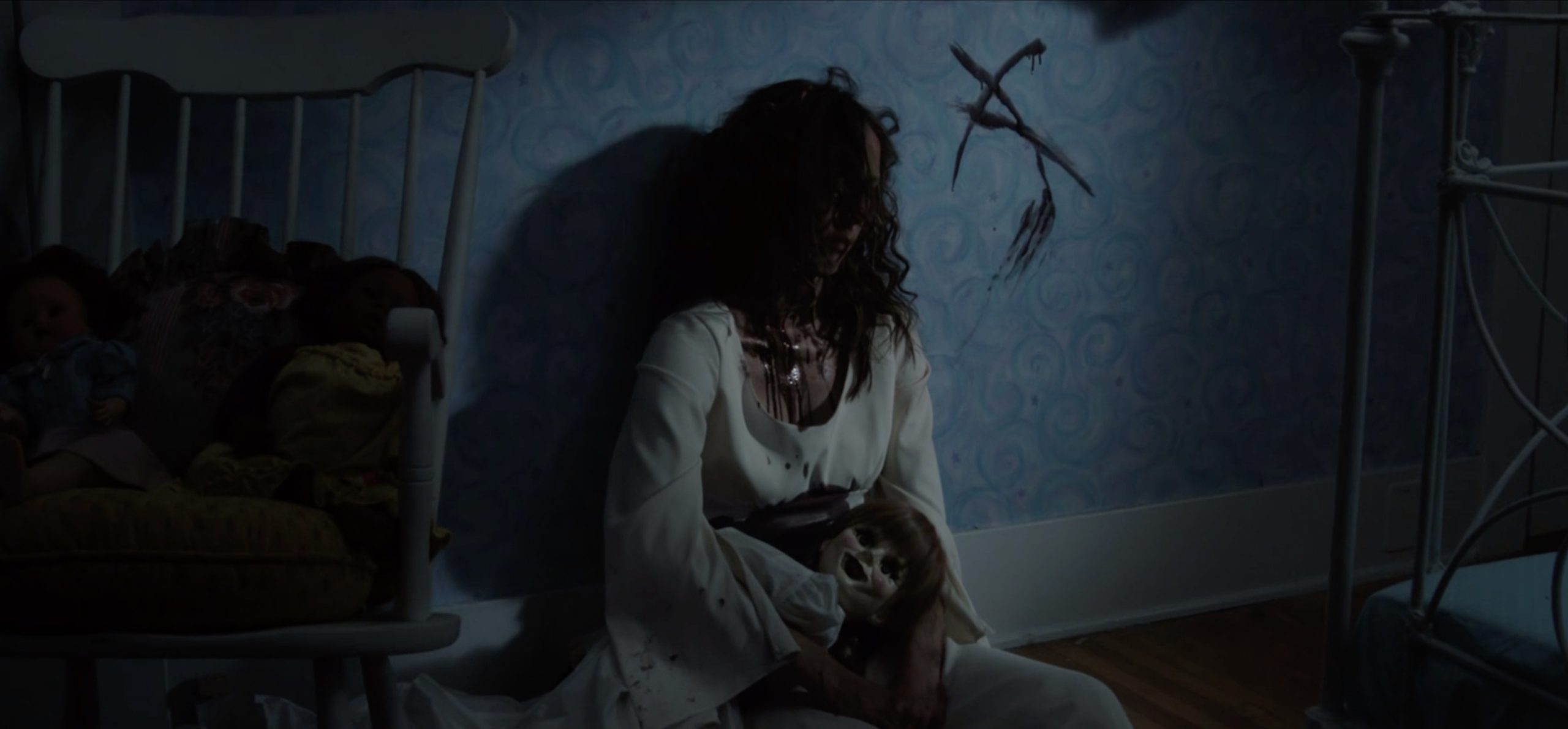
Following the success of The Conjuring (2013), another movie based on Ed and Lorraine Warren’s paranormal investigations was made. In real life Ed and Lorraine did investigate a haunted doll named Annabelle, and the doll became a famous draw to the couple’s now-closed occult museum. However, the story told in the Annabelle movie is almost a prequel to the “real” story of a nursing student and her roommate who were terrorized by a Raggedy Ann doll they named Annabelle and is also lightly inspired by the Manson family.
You can read the full origin story of Annabelle here.
The Conjuring 2 (2016)

This Conjuring film is based on one of the most famous hauntings of all time, the Enfield Poltergeist. The Enfield case occurred when a single mother and her four children moved into a welfare house in England. Two of her daughters began experiencing paranormal activity after using a ouija board in the home.
This “based on a true story” movie is interesting because within the film, disproven aspects of the haunting are addressed with the children characters saying that the hauntings were real but they exaggerated parts of it in order to be taken seriously and receive help.
My Friend Dahmer (2017)

This odd autobiographical film is based on a 2012 graphic novel by a cartoonist named John “Derf” Backderf. Backderf knew Jeffrey Dahmer in high school and goaded him to perform a series of pranks that were half-done in friendship and half-done as bullying. It details how Jeffrey’s mind fell apart and he lapsed into severe alcoholism after his parents got divorced. And it ends with Jeffrey picking up a hitchhiker and asked him if he wanted to drink a few beers—this wound up being his first real-life murder victim.
The Clovehitch Killer (2018)
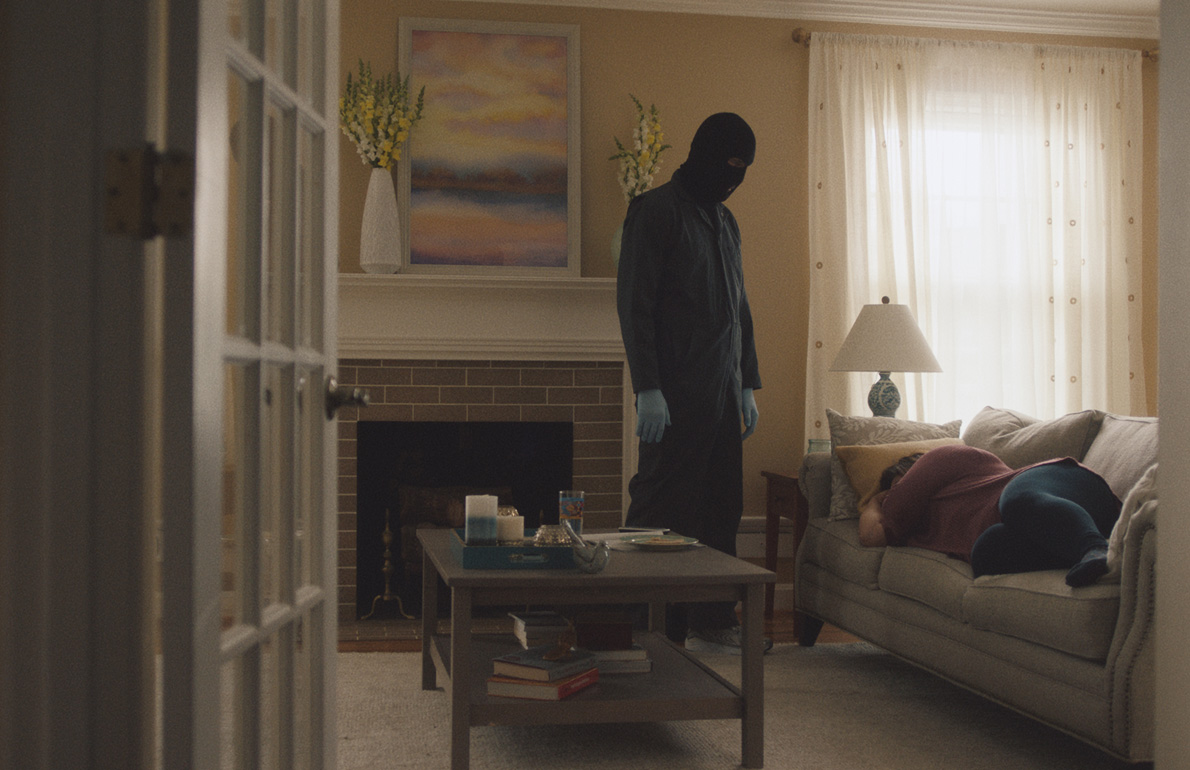
The Clovehitch Killer is a fictional portrayal of a family man who also happens to be a serial killer. If elements of the film seem familiar, it is because the character is based on the real life BTK strangler who terrorized Wichita, KS between 1974 and 1991. Outside of the murders, Dennis Rader had a wife and children who were shocked to discover he was actually a killer.
Extremely Wicked, Shockingly Evil and Vile (2019)

This Netflix Original tells the story of one of America’s most horrific serial killers, Ted Bundy. The film, which was written by Michael Werwie, uses the memoir of Ted Bundy’s longtime girlfriend, Elizabeth Kendall, as its primary source material. That book is called The Phantom Prince: My Life with Ted Bundy, and you can buy it on Amazon to give the film more context on what is dramatized and what is real. It also includes chilling photos of Elizabeth and her daughter’s life with Ted. The movie is quite disturbing and does a good job of showing what it would be like to be a young single mother involved with a predator like Ted Bundy.
The Lighthouse (2019)
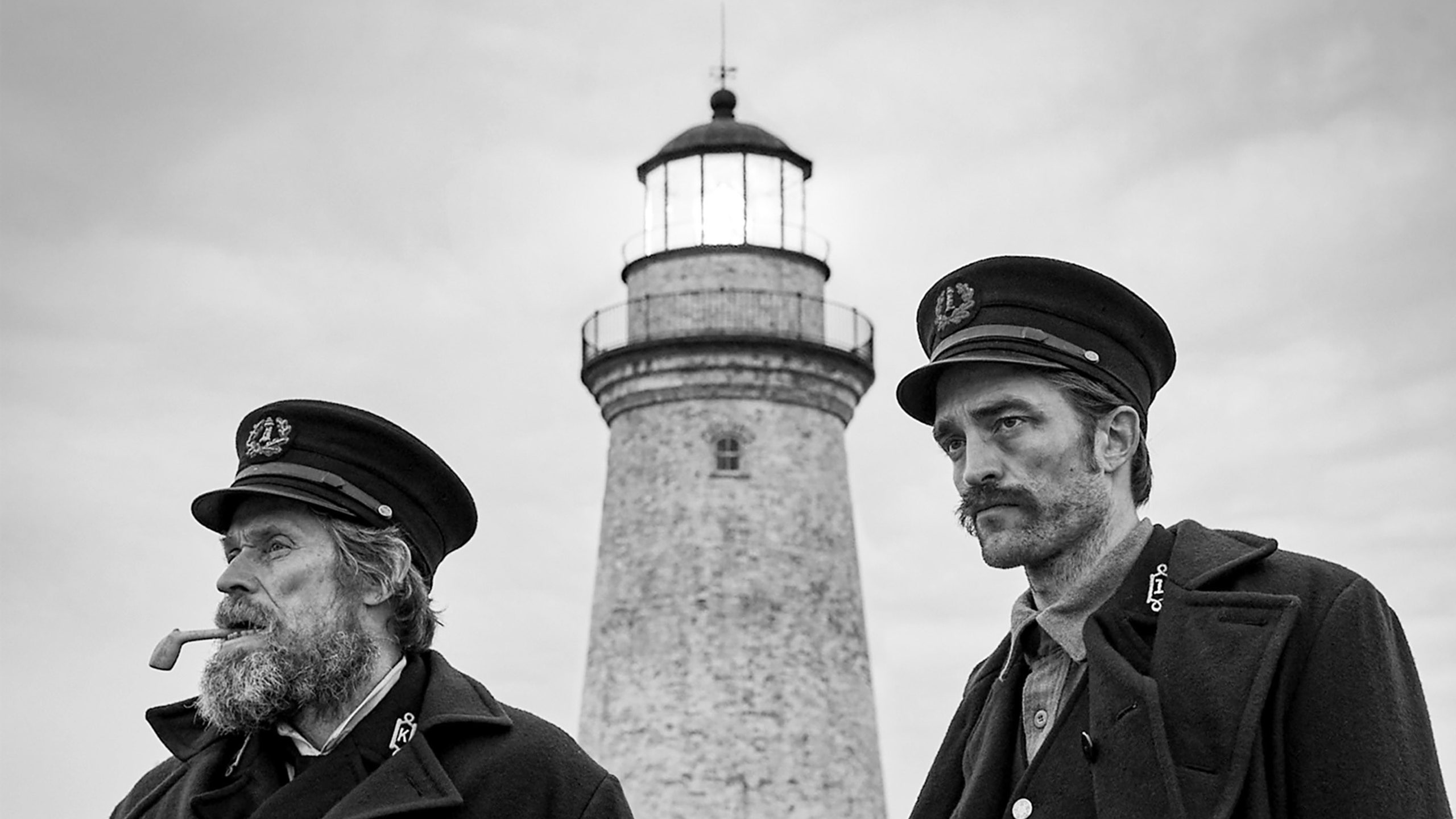
Robert Egger’s black-and-white horror movie about two lighthouse workers (Willem Dafoe and Robert Pattinson) who are marooned together is inspired by an unfinished Edgar Allen Poe story and mythology about the Smalls Lighthouse in Wales.
The old lighthouse brought about a change in lighthouse policy in 1801 after a gruesome episode, sometimes called the Smalls Lighthouse Tragedy. Thomas Howell and Thomas Griffith, the two-person team that managed the lighthouse, were publicly known to quarrel. When Griffith died in a freak accident, Howell feared that if he discarded the body into the sea, authorities might accuse him of murder. As Griffith’s body began to decompose, Howell built a makeshift coffin for the corpse and lashed it to an outside shelf. Stiff winds blew the box apart, and the body’s arm fell within view of the hut’s window. As the winds would blow, gusts would catch the arm and move it in a way that made the appendage appear to beckon. In spite of his former partner’s decaying corpse and working the lighthouse alone, Howell was able to keep the house’s lamp lit. When Howell was finally relieved of duty, the impact of the situation was so emotionally taxing that his friends did not recognize him. As a result, the governing body changed the lighthouse policy to make lighthouse teams rosters of three people, which continued until the automation of British lighthouses in the 1980s.
Smalls Lighthouse Tragedy
Run (2020)

Run is a psychological thriller film about a disabled teenager and her controlling mother. The filmmakers avoided stating it directly, but the film is obviously inspired by the high-profile case of Gypsy Rose and her mother Dee Dee Blanchard. Blanchard seems to have had symptoms similar to Munchausen syndrome by proxy and forced her daughter, Gypsy, to pretend to be younger and sicker than she actually was. After a lifetime of abuse, 14-year-old Gypsy and her boyfriend murdered Dee Dee and ran away together. They were later apprehended and tried for Dee Dee’s murder, Gypsy was sentenced to 10 years and her boyfriend was sentenced to 25 years in prison.
The Conjuring 3: The Devil Made Me Do It (2021)
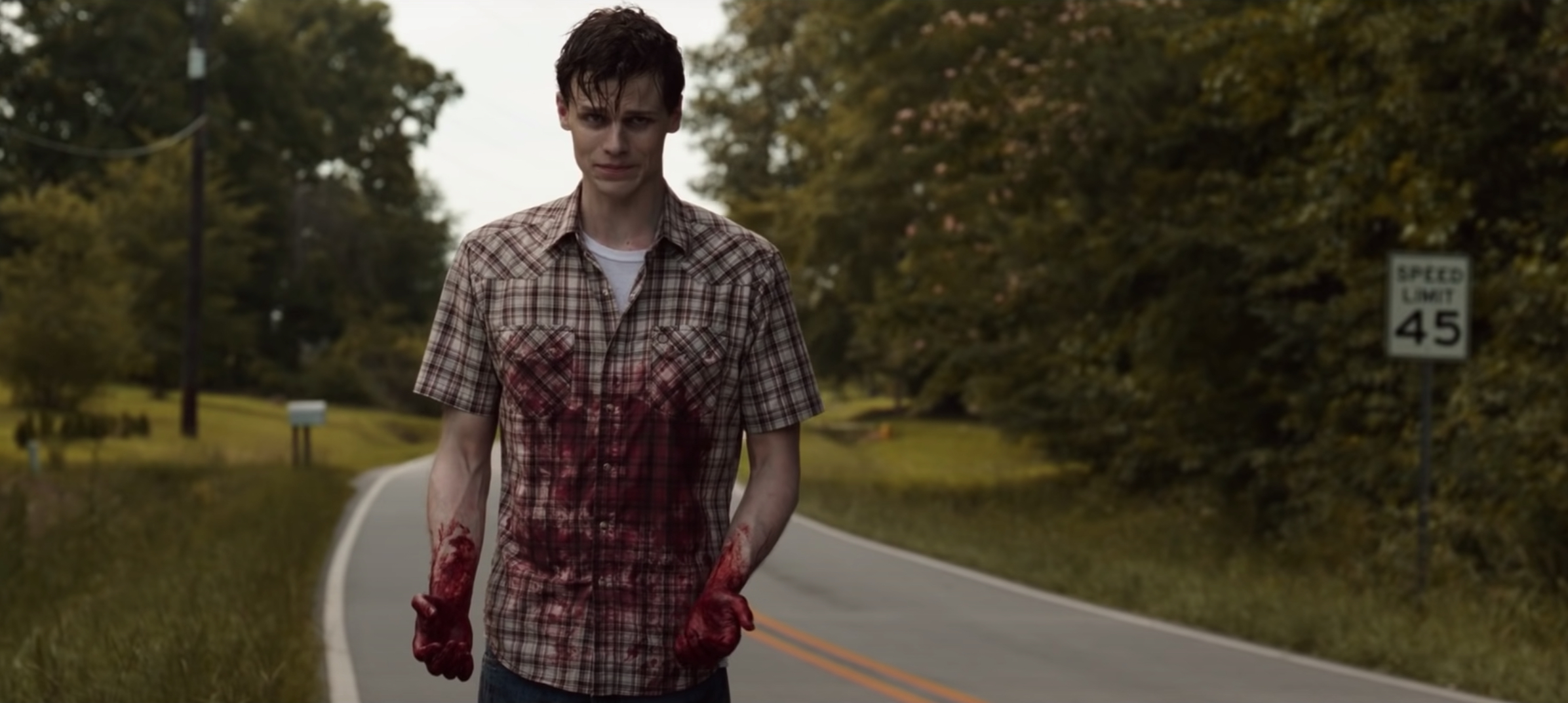
This movie is about a famous case the Warrens consulted on which was the first time someone tried to create a defense based on demonic possession in U.S. history. After the Glatzel family moved into a new house, they began to experience a haunting. During an exorcism, family friend Arne “Cheyenne” Johnson asked the demon to possess him, rather than the 8-year-old boy who was being afflicted. Months later Johnson murdered his landlord in a crime he claims not to remember.
Things Heard & Seen (2021)
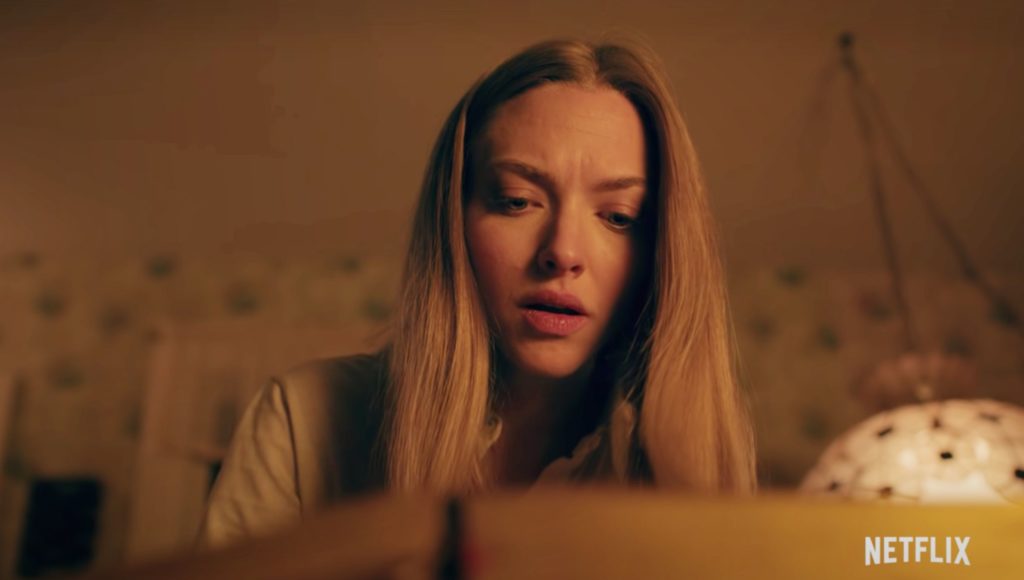
This Netflix original stars Amanda Seyfried as an artist who abandons New York City in the 70s in favor of an idyllic country town so her husband can teach at a local community college. Not only is the script based on a best-selling book, All Things Cease to Appear by Elizabeth Brundage, but that book is also based on a true story. Author Elizabeth Brundage wrote it when she, much like Seyfried’s character, moved to upstate New York from the city. In her small town, Brundage discovered the story of a former resident named Cathleen Krauseneck. Cathleen was a 29-year-old mother who stayed home to care for her to a 3-year-old girl while her husband worked to support the family. Her husband says he came home from work all day and discovered an axe buried in his wife’s head, meaning he left their 3-year-old alone all day with her mother’s body.
On Monday, September 22nd, 2022 a jury found James Krauseneck guilty of 2nd degree murder in his wife’s death. It took over 40 years for this conviction to take place. Cathy’s 95-year-old father said, “I wanted to live long enough to (see) it…My wife passed away four years ago. She didn’t make it.”
More Horror Movies Based on Real Events
- Psycho (1960) the famous Hitchcock movie was inspired by Wisconsin murderer Ed Gein.
- The Honeymoon Killers (1969) is based on the story of Martha Beck and Raymond Fernandez, the “Lonely Hearts Killers” who preyed on women who advertised for husbands in magazines.
- Deranged (1974) is also inspired by Wisconsin murderer Ed Gein.
- Vengeance Is Mine (1979) a Japanese thriller that tells the story of a murder rampage by Akira Nishiguchi, a Japanese serial killer and fraudster.
- Cruising (1980) is based on the murder of gay men in New York City’s S&M subculture.
- The Shining (1980) this haunted hotel story is based on a few elements of writer Stephen King’s actual life. Like Jack Torrance, King was also (at the time) a struggling writer who had suffered from alcohol addiction and worried about how his anger affected his children.
- Communion (1989) is based on author Whitley Streiber’s real-life experiences with alien communication.
- No One Would Tell (1996) the iconic made-for-television film starring Fred Savag and Candace Cameron Burre is unfortunately based on the real life story of Amy Carnevale, a 14-year-old girl who was murdered by her 16-year-old ex-boyfriend, Jamie Fuller, on August 23, 1991, in Beverly, Massachusetts.
- Urban Legend (1998) there are kernals of truth in several of the urban legends discussed in the film. There’s also the fact that the movie’s villain, played by Rebecca Gayheart, is motivated by a reckless driving incident in which another character ended up killing her fiance. In real life Gayheart pled no contest to vehicular manslaughter in 2001 after she hit a 9-year-old boy in Los Angeles and he subsequently died of his injuries.
- Ravenous (1999) is loosely based on the story of 1847’s “Donner Party” and how they resorted to cannibalism.
- There Is a Secret in My Soup (2001) is an adaptation of the “Hello Kitty murder,” a 1999 torture and murder in Hong Kong in which part of the victim’s body was discovered sewn into a Hello Kitty mermaid doll.
- Human Pork Chop (2001) is also based on the “Hello Kitty murder” case.
- Monster (2003) a fictional portrayal of real life killer Aileen Wuornos.
- The Uninvited (2003) Lee Soo-yeon’s directorial debut was inspired by the real case of a woman who threw two children from the top floor of a building in Bucheon in 1996.
- Concrete (2004) is based on the torture and murder of Junko Furuta in Japan in 1989. Furuta’s body was discovered encased in concrete in a steel drum.
- Zodiac (2007) is inspired by the unsolved mystery of California’s Zodiac Killer.
- Slaughter (2009) – An abused woman moves to her family farm where men are being killed in a slaughterhouse. Slaughter is allegedly based on a true story from a century ago, but the director hasn’t stated what true story that is.
- The Rite (2011) is based on a book by Matt Baglio about a real-life exorcism.
- Henry: Portrait of a Serial Killer (2016) was inspired by real-life serial killer Henry Lee Lucas.
- Rust Creek (2018) a crime thriller that shares a premise with the well known unsolved mystery of Maura Murray’s disappearance.
- Veronica (2018) this movie streaming on Netflix takes place in Madrid, Spain and is based on a real police report that purports a young woman, Estefanía Gutiérrez Lázaro, conducted a séance with a ouija board and was then terrorized by a demon with several months of seizures and hallucinations.
- Once Upon a Time… in Hollywood (2019) is a fictional comedy-drama by Quentin Tarantino that contains elements of the real Hollywood of 1969 including the Manson family creeping around Laurel Canyon.
- The Scary of Sixty-First (2021) a dark comedy thriller based around the real life crimes of Jeffrey Epstein.
- Home for Rent (2023) a Thai horror movie inspired by real cases of human sacrifices.
